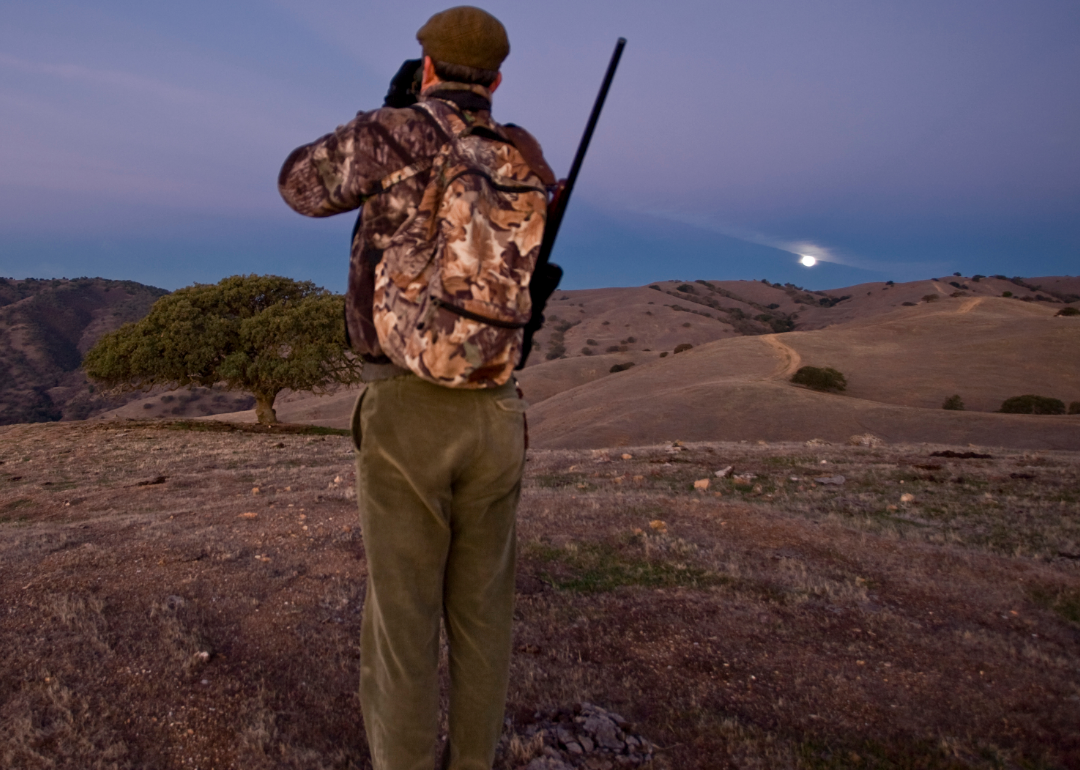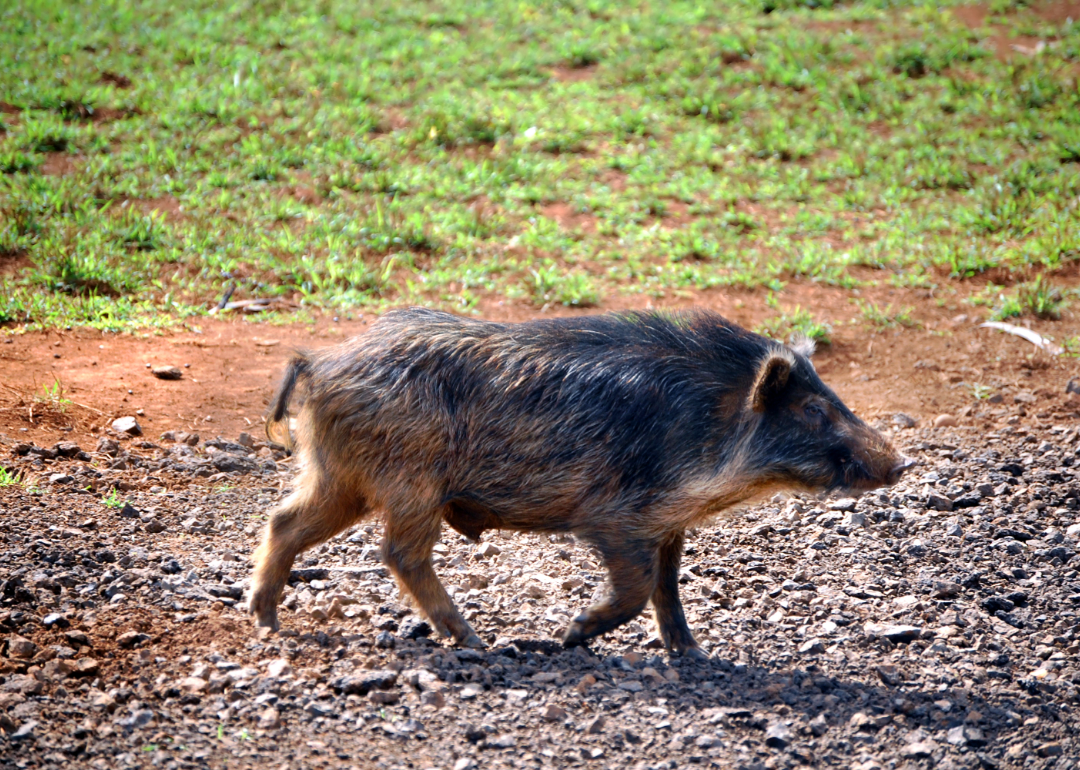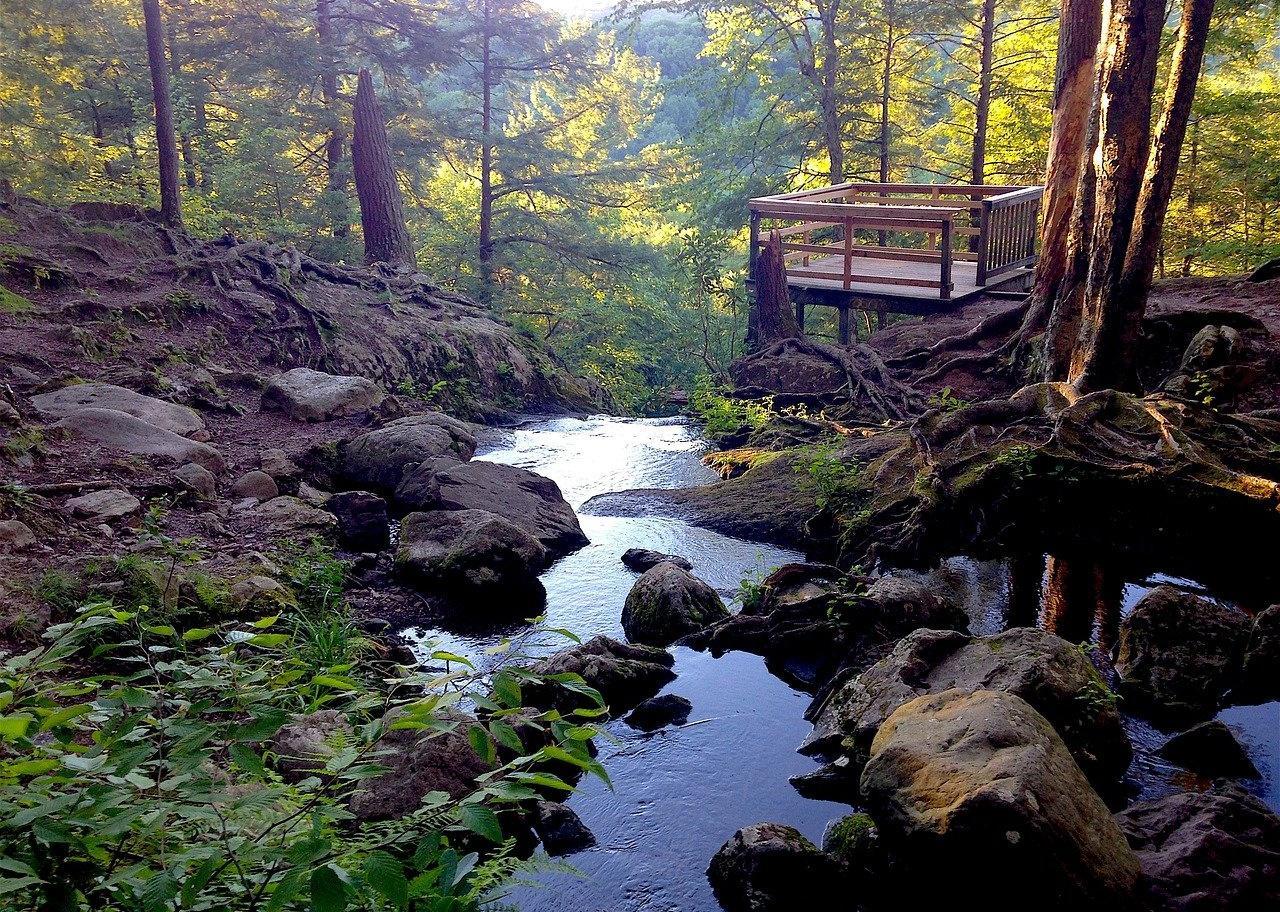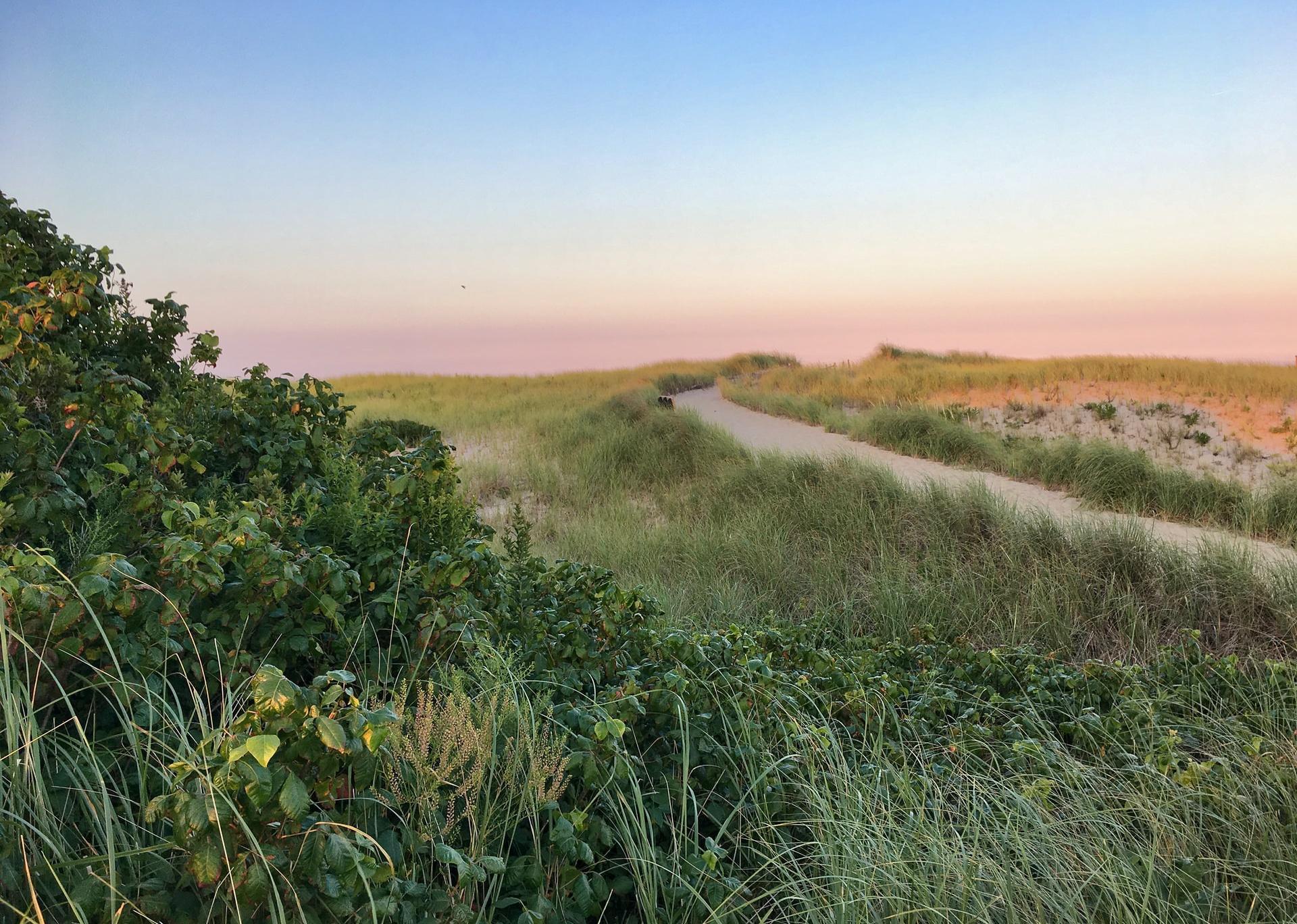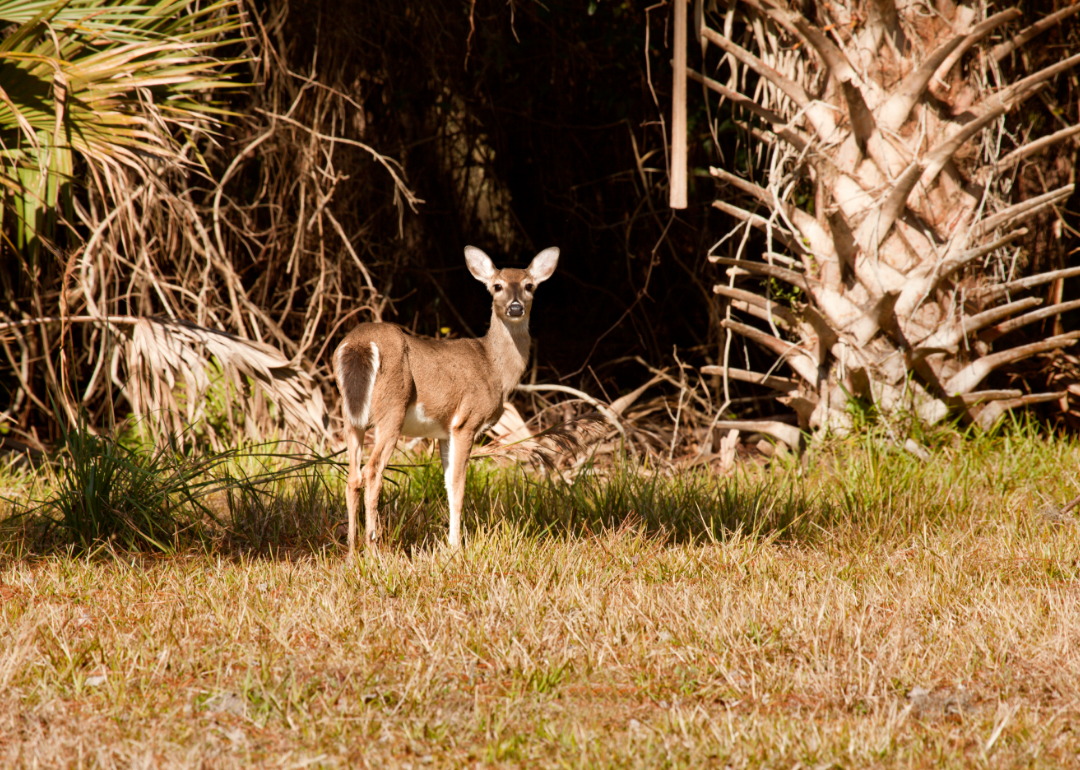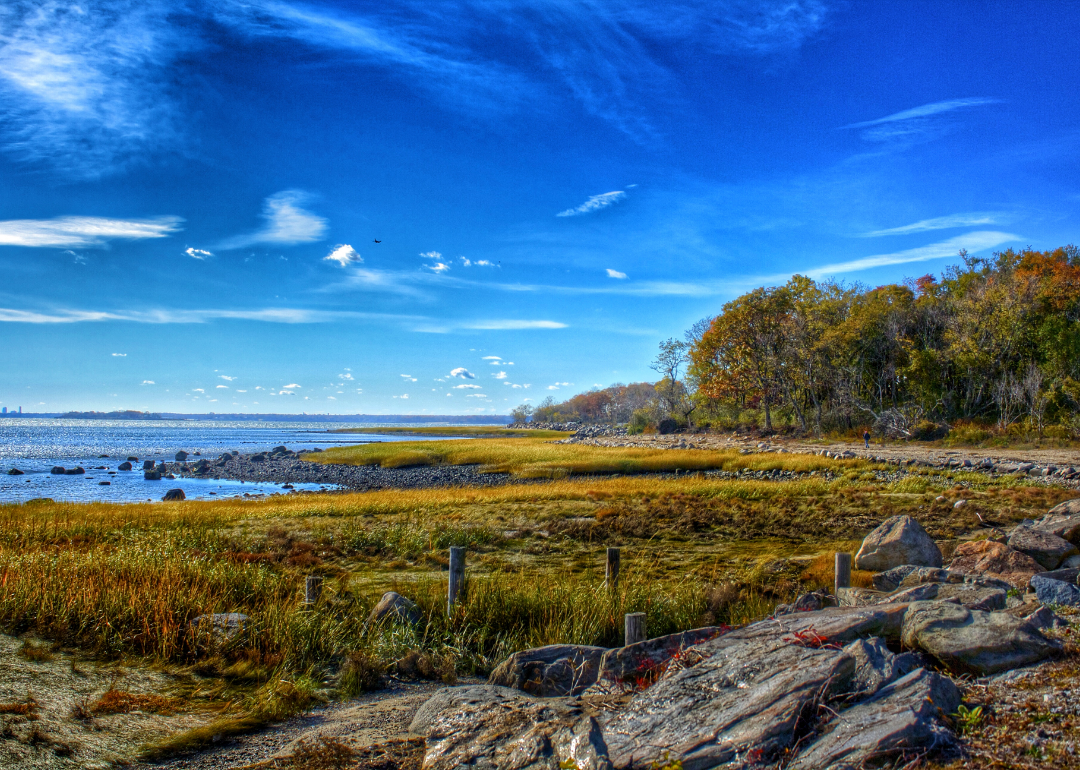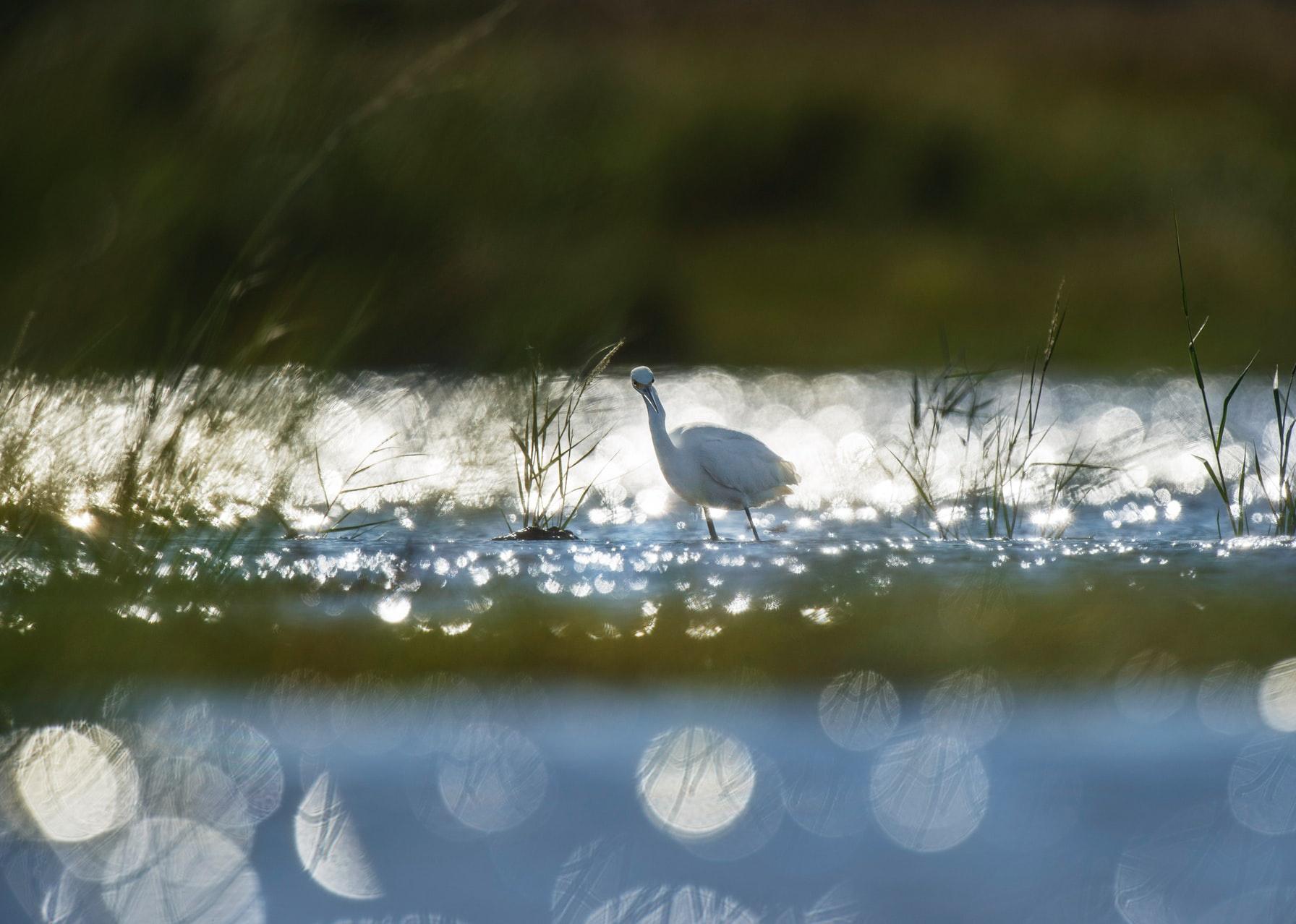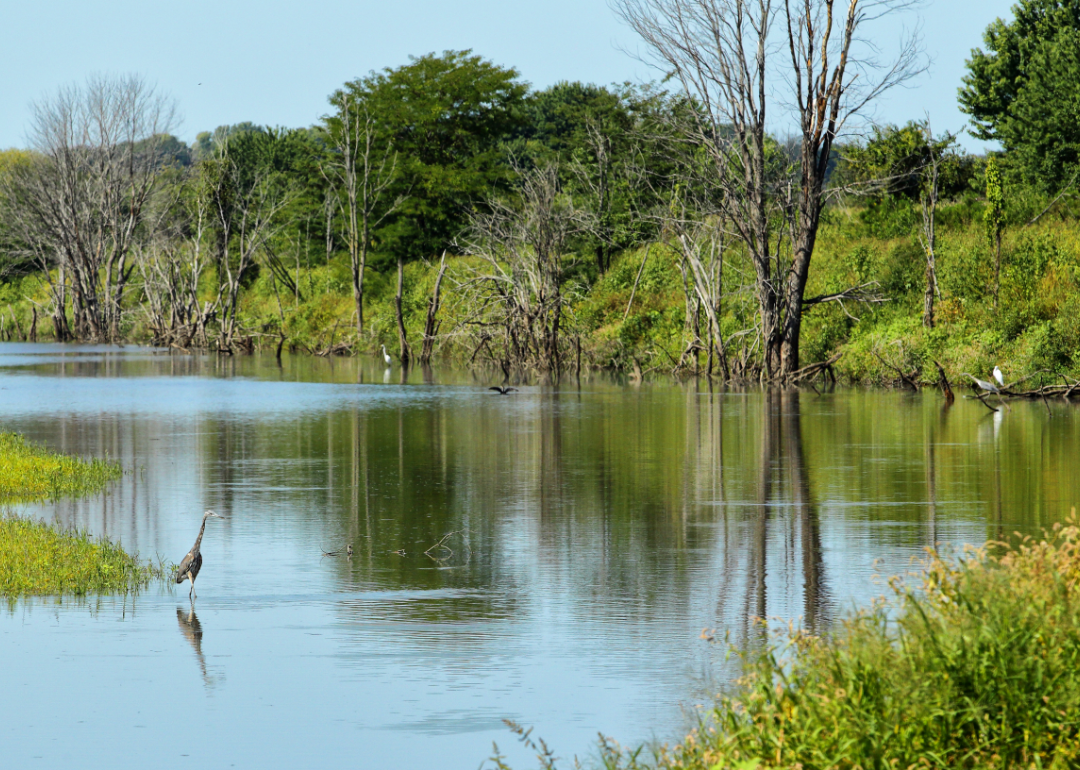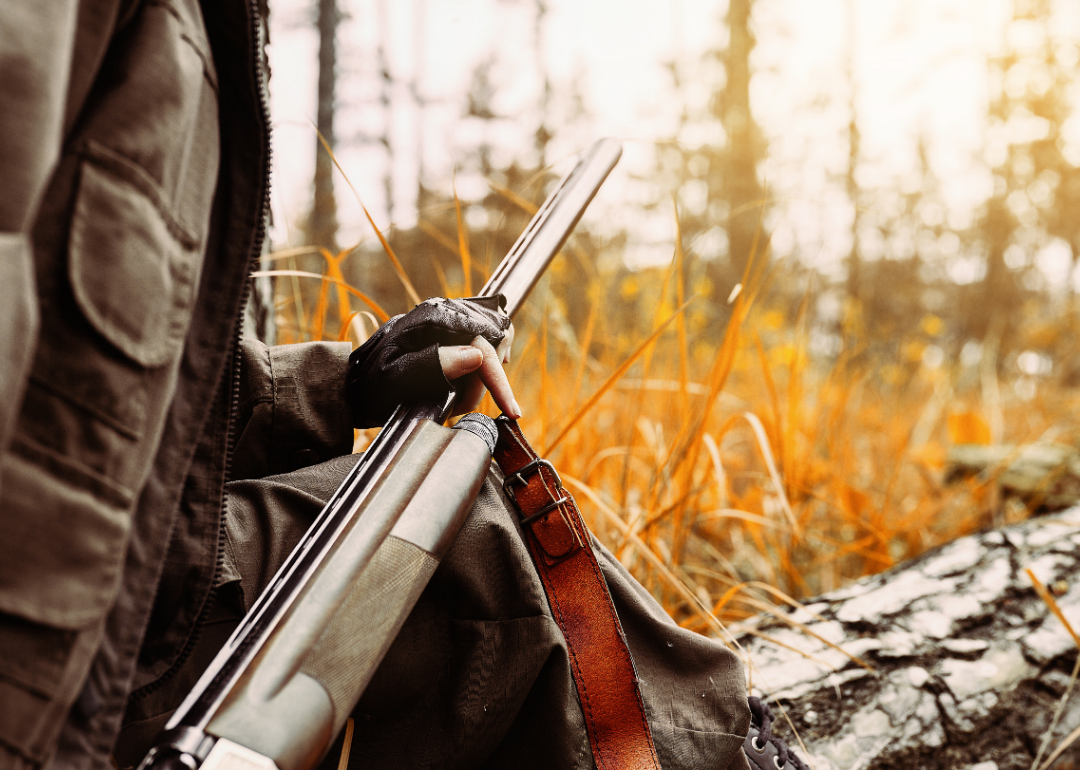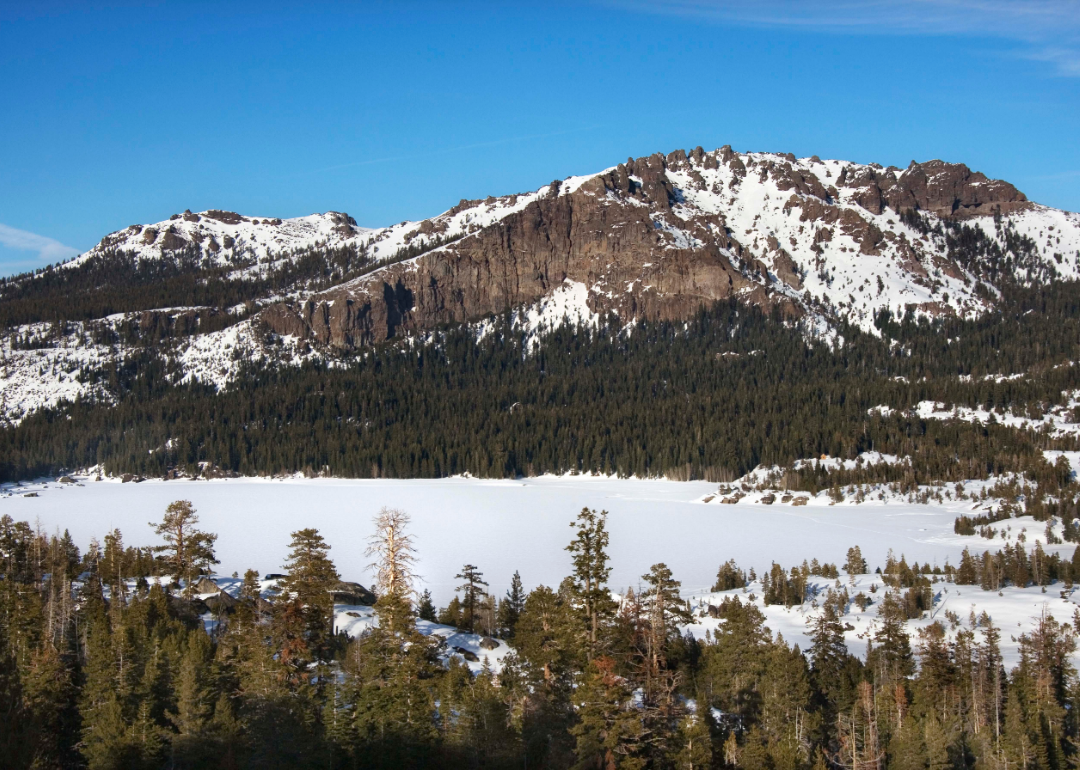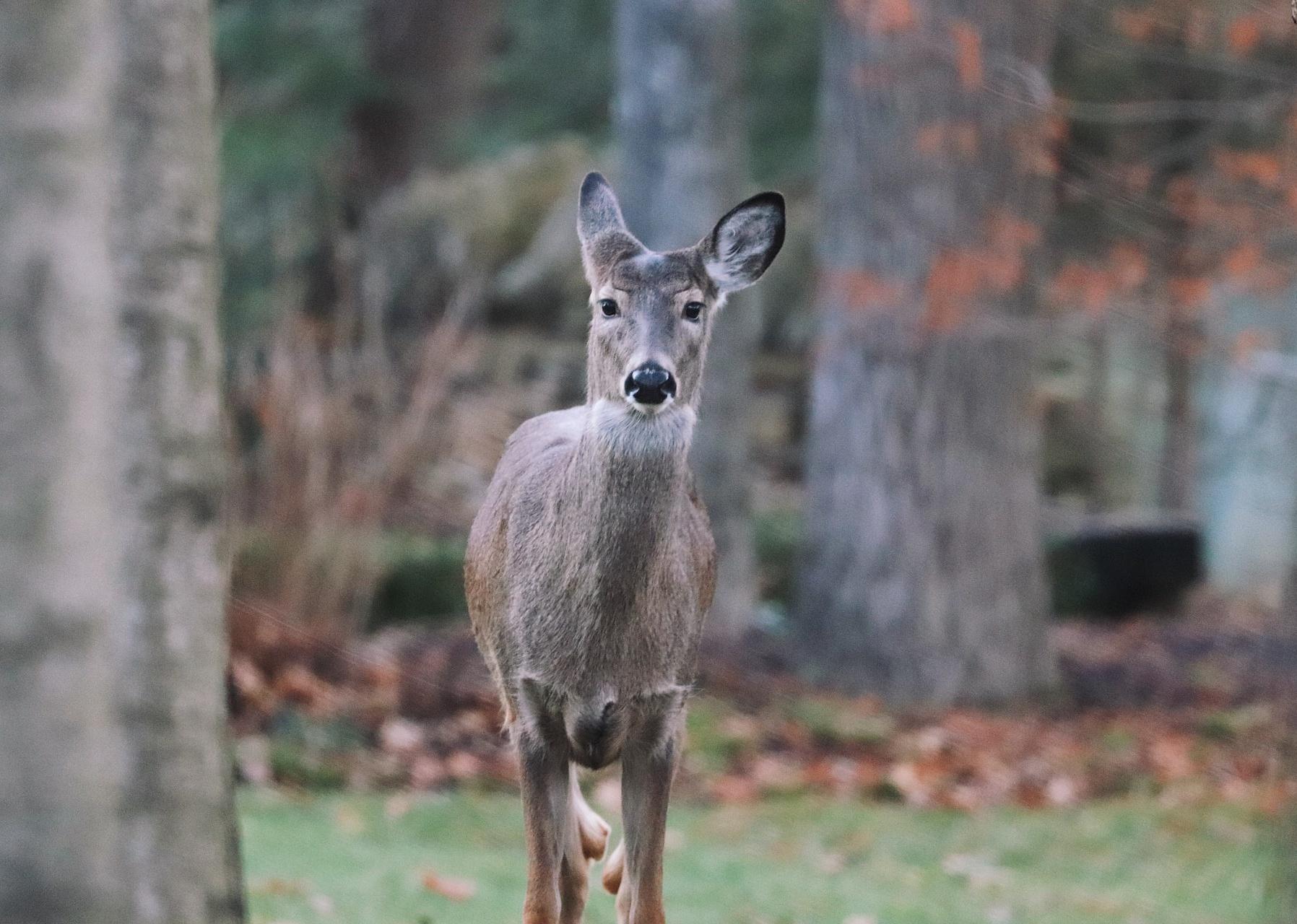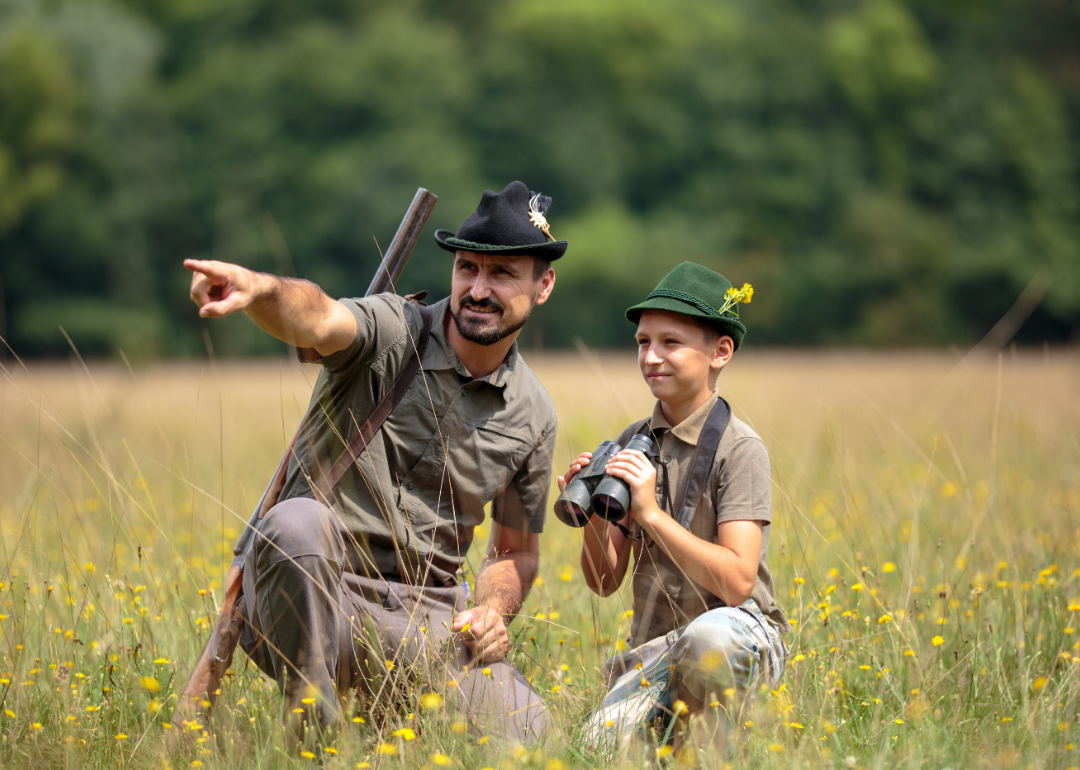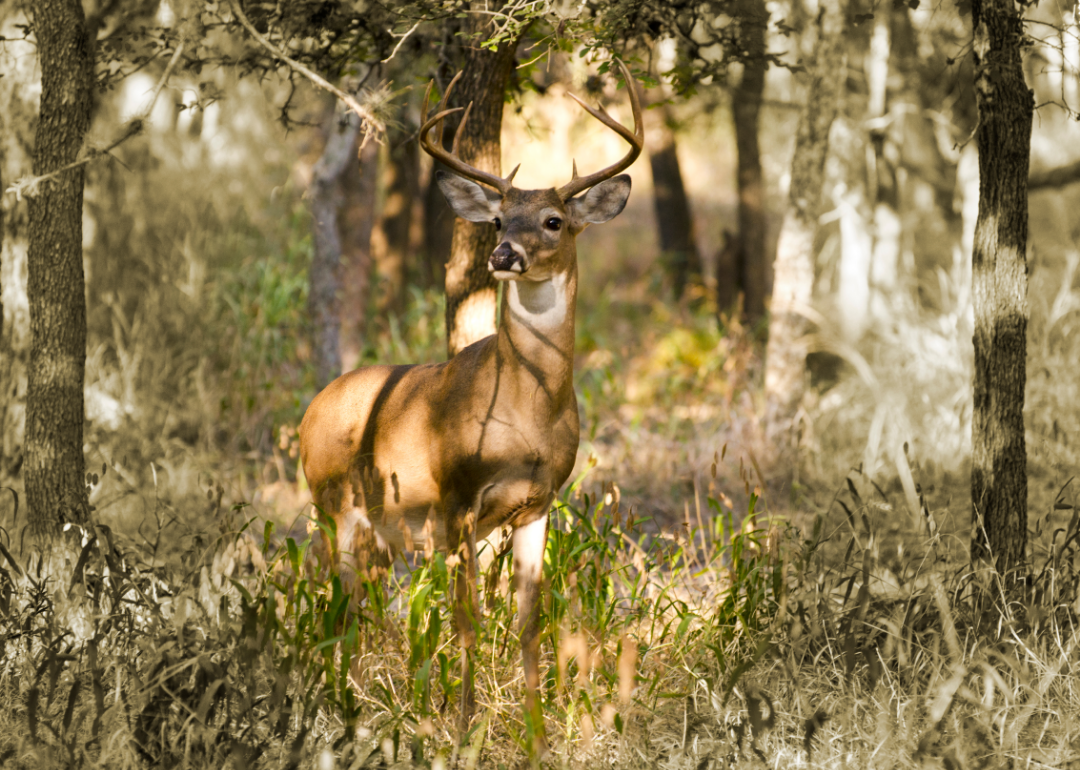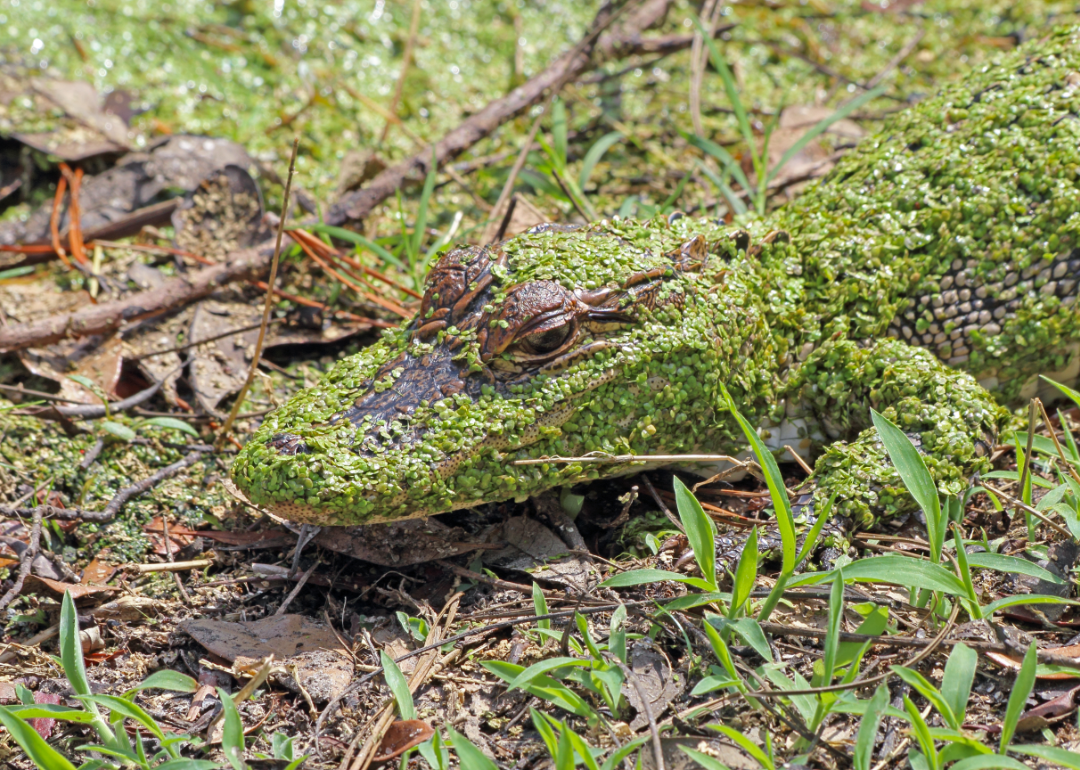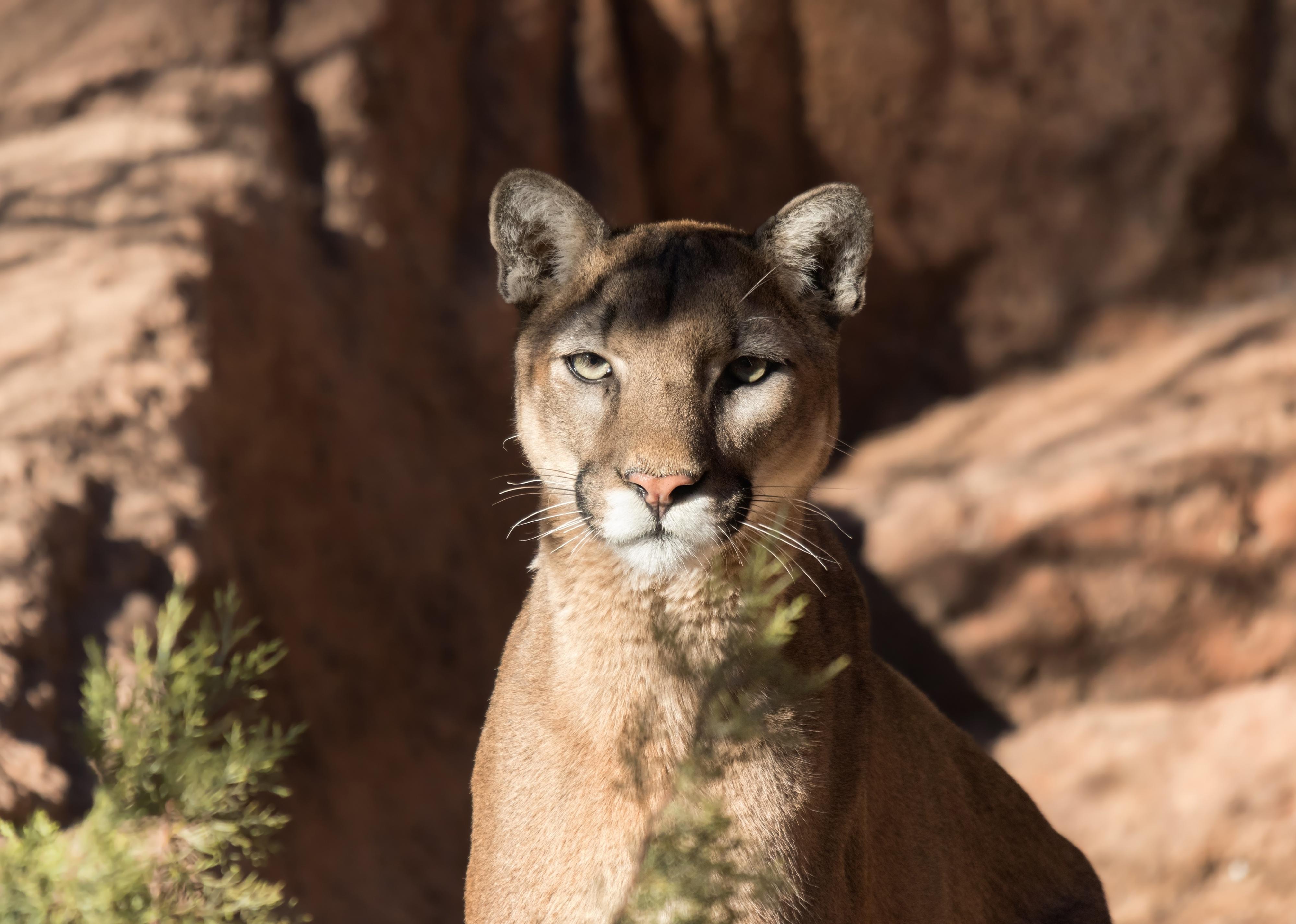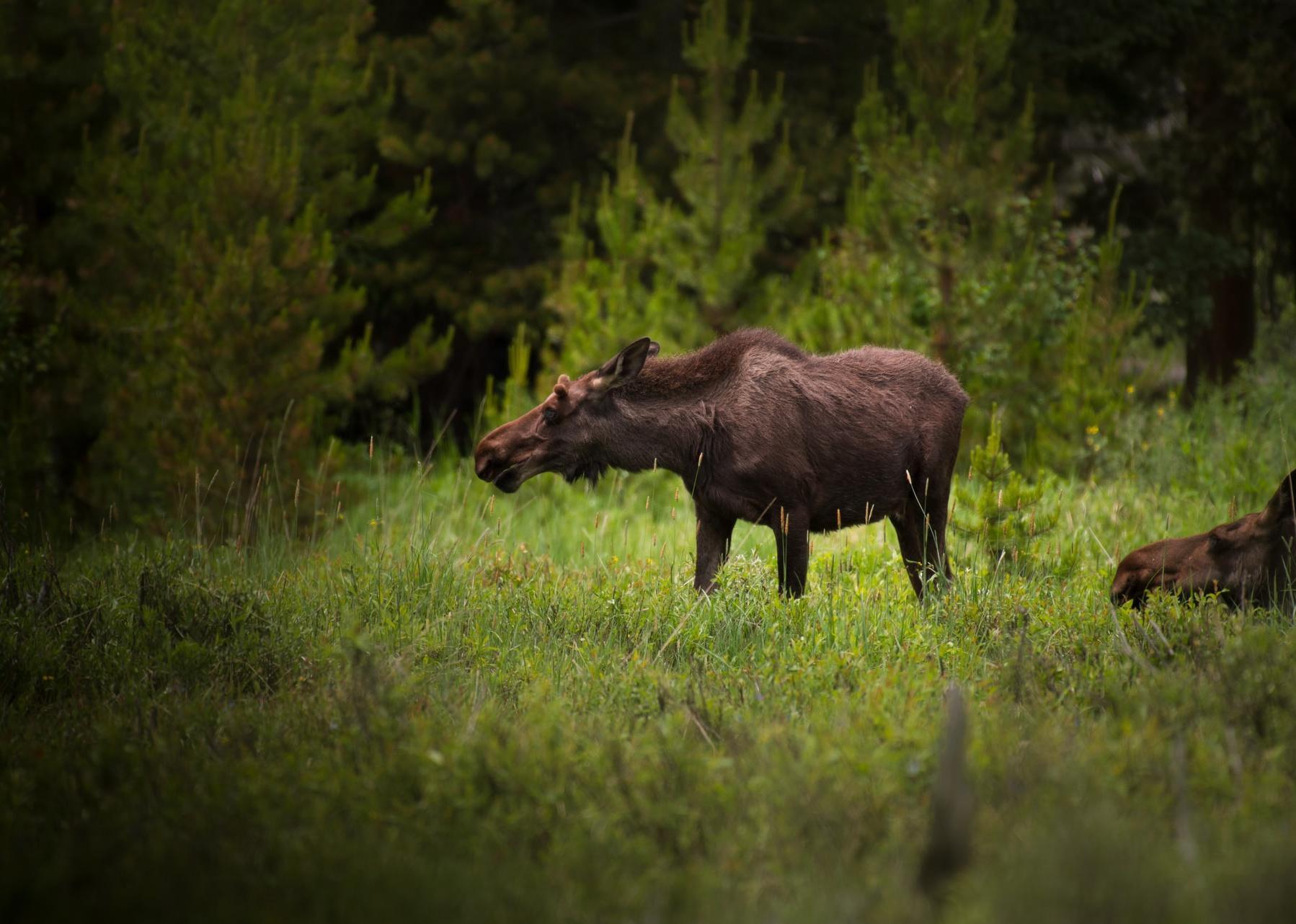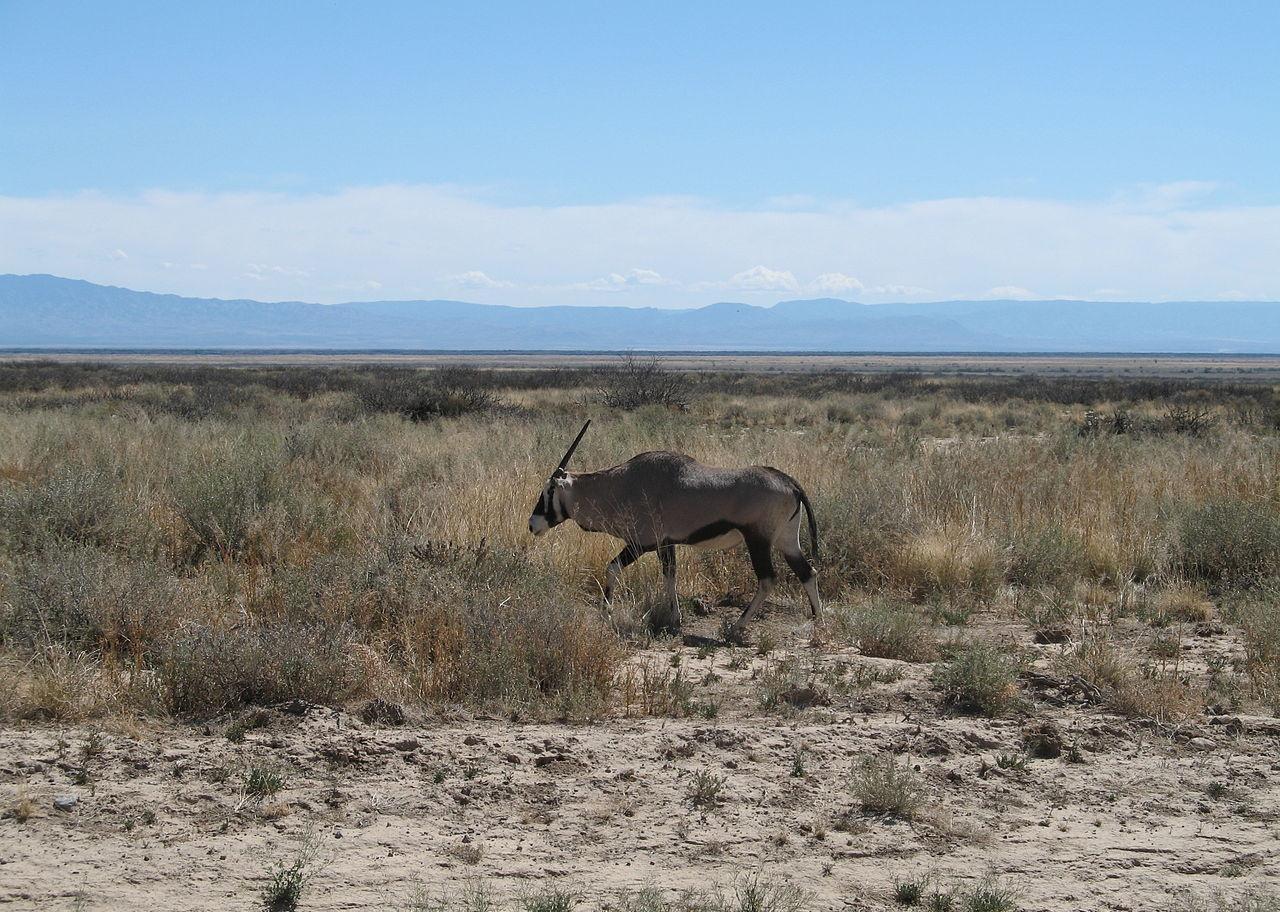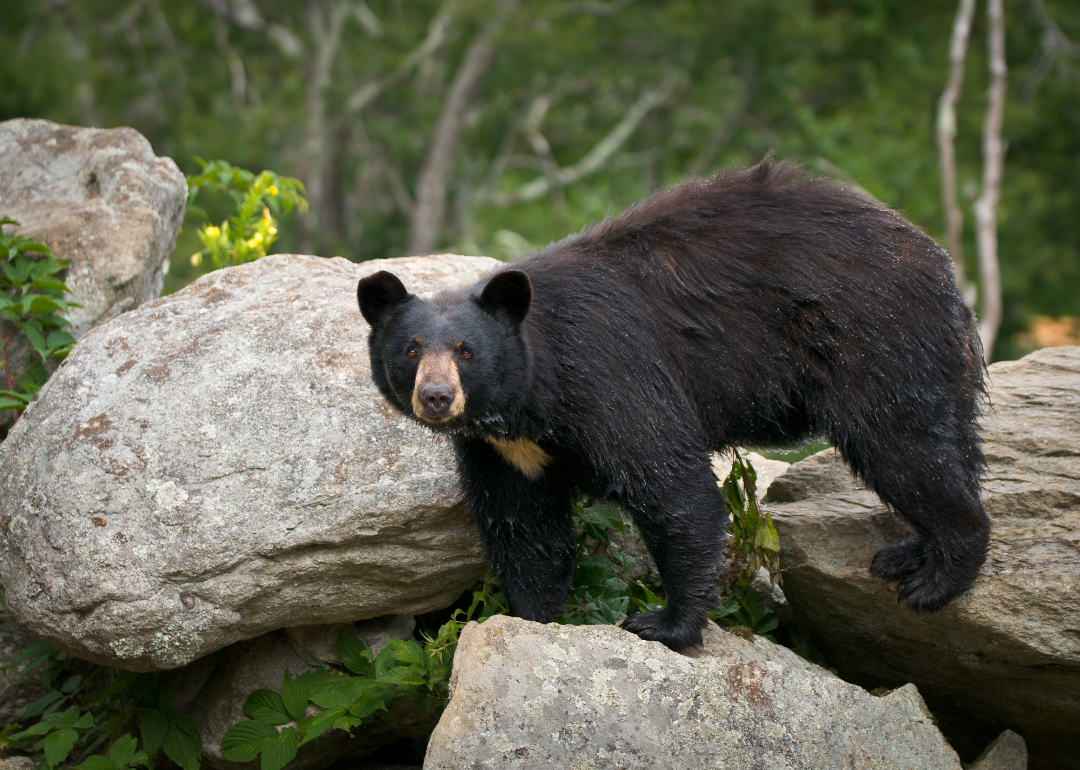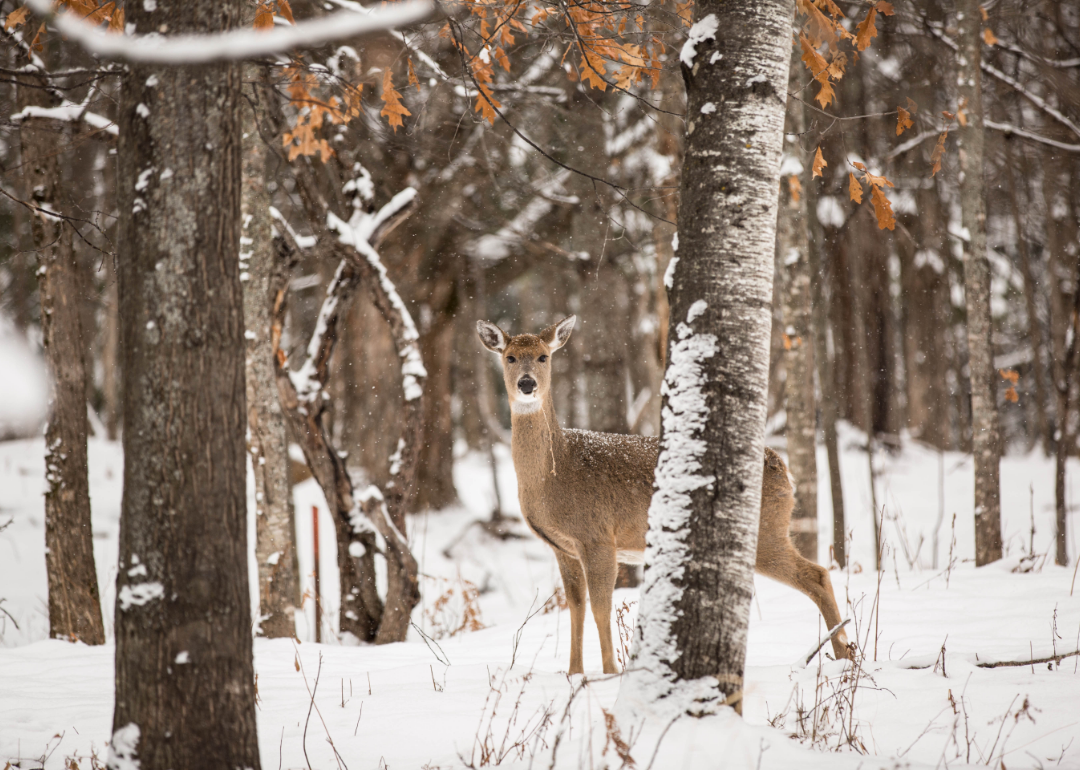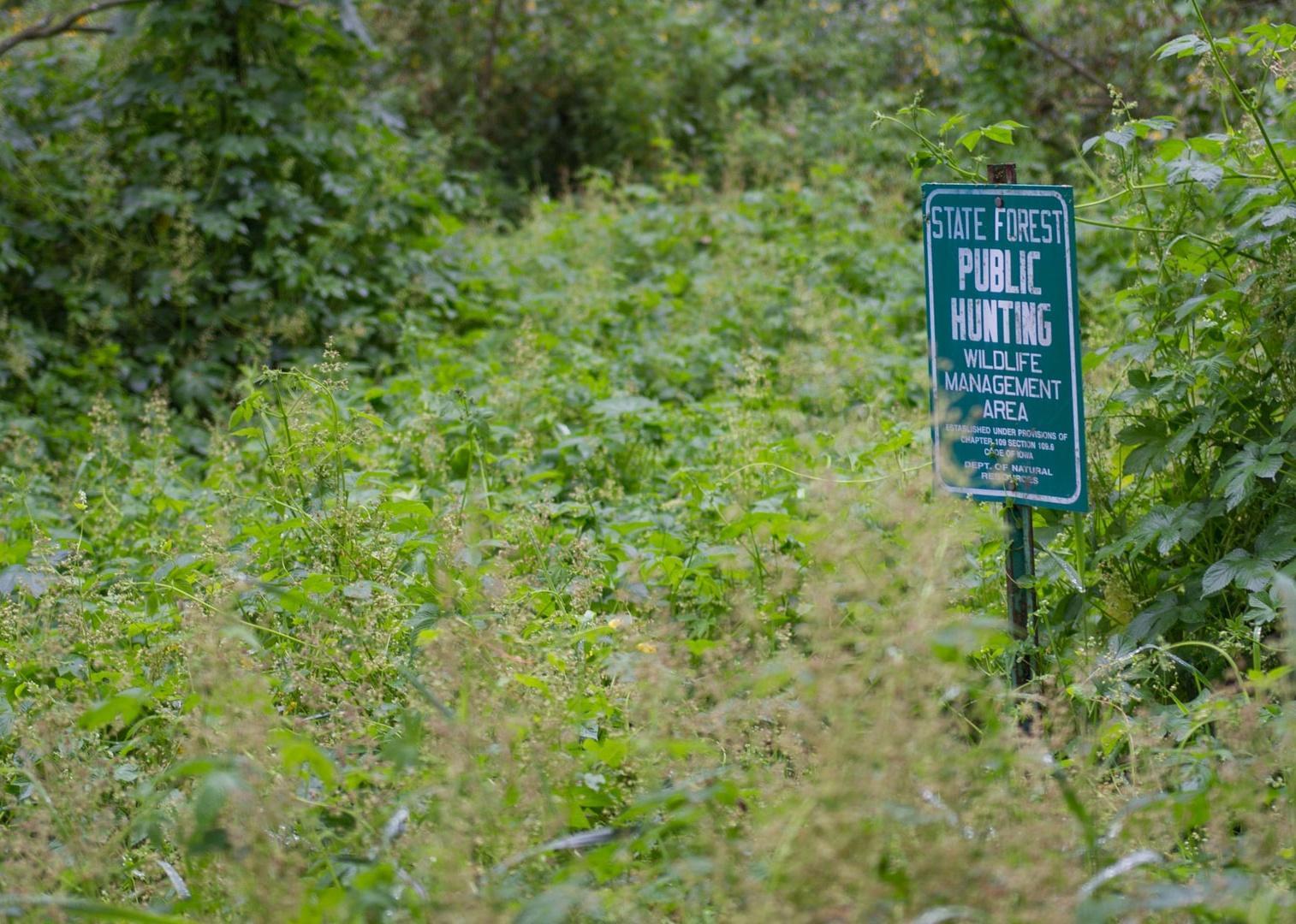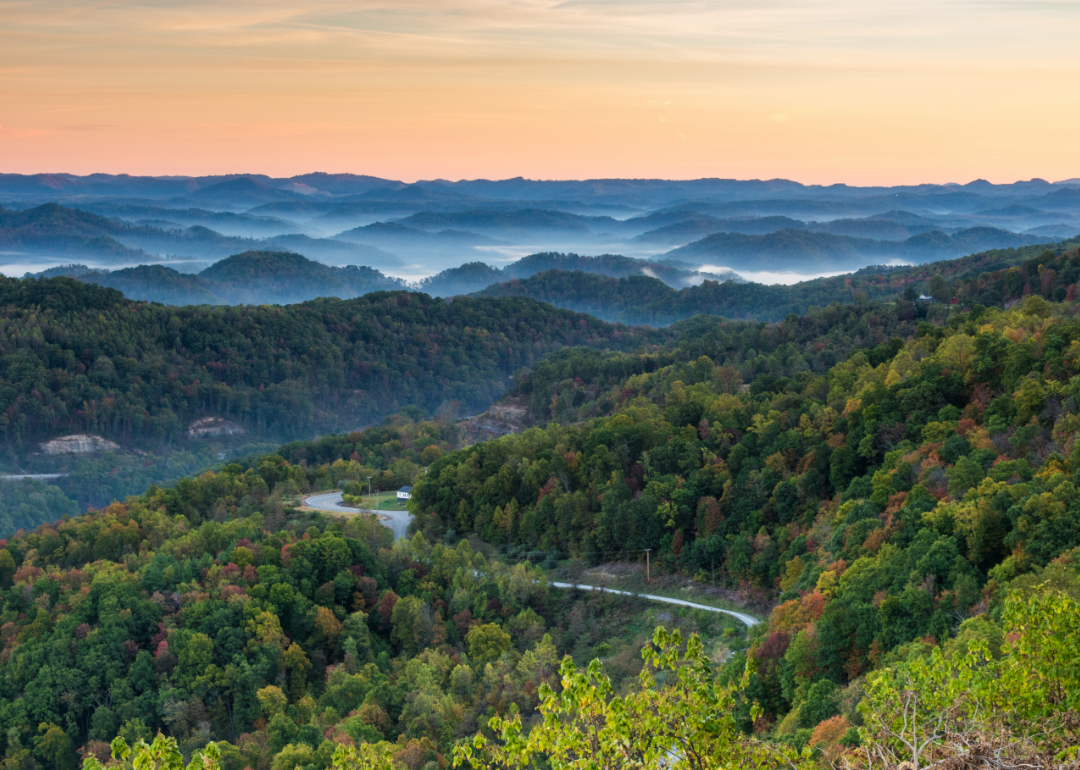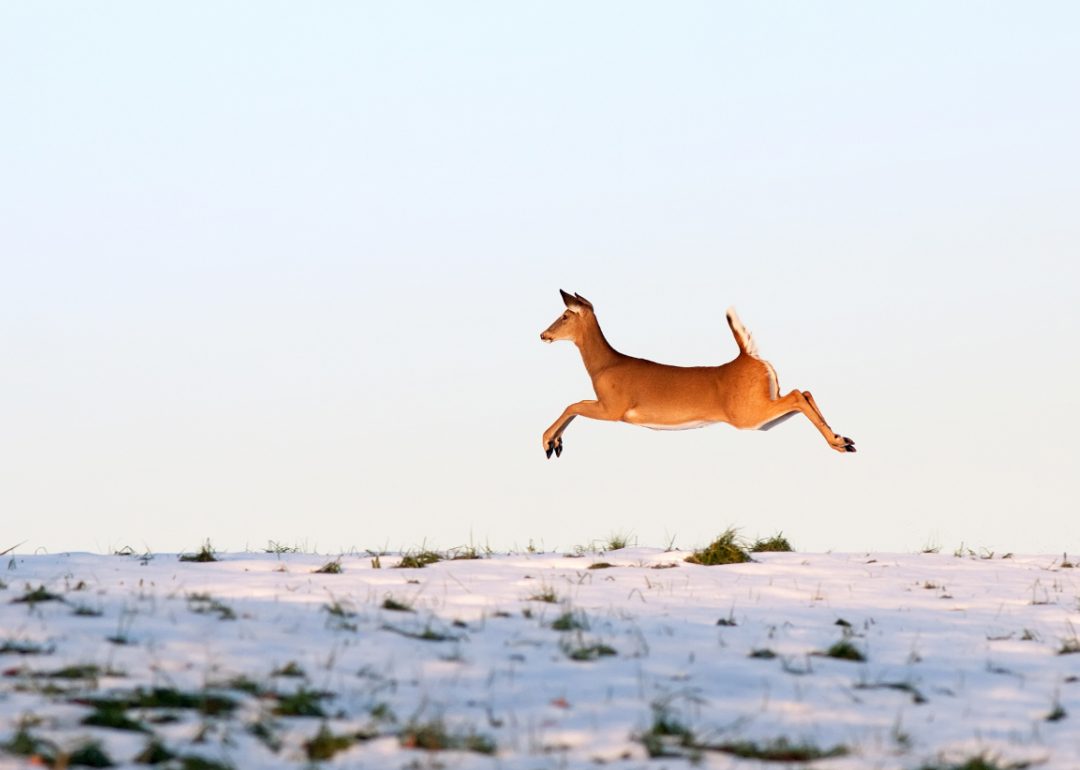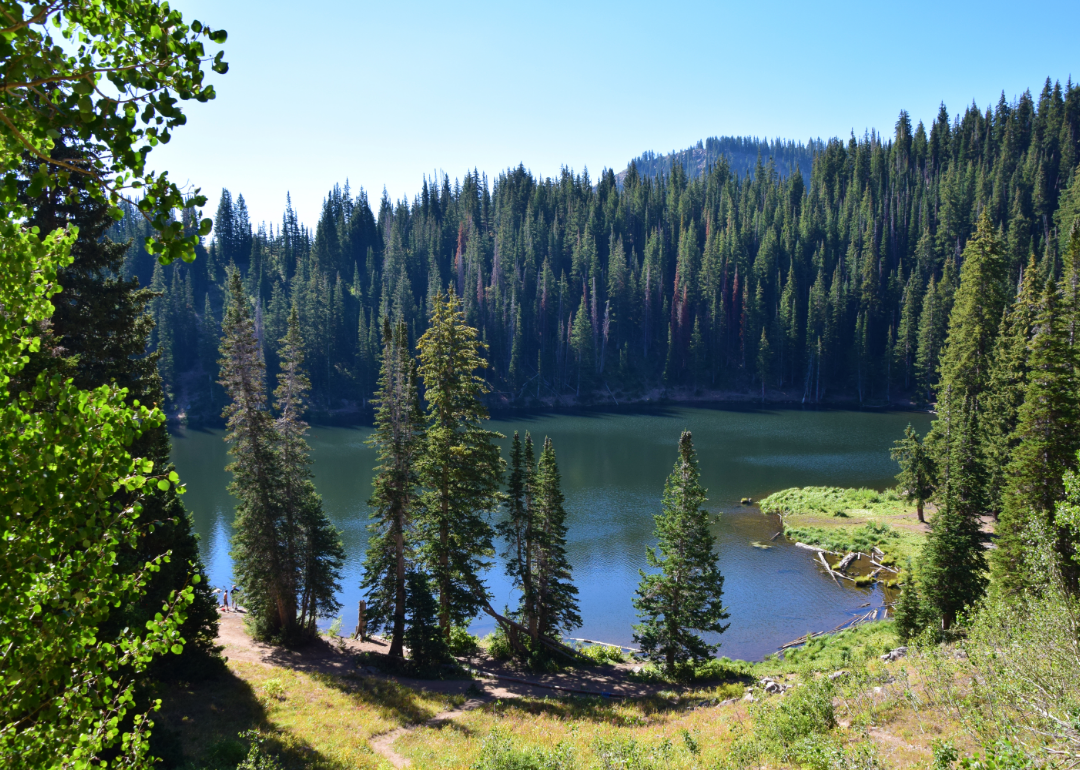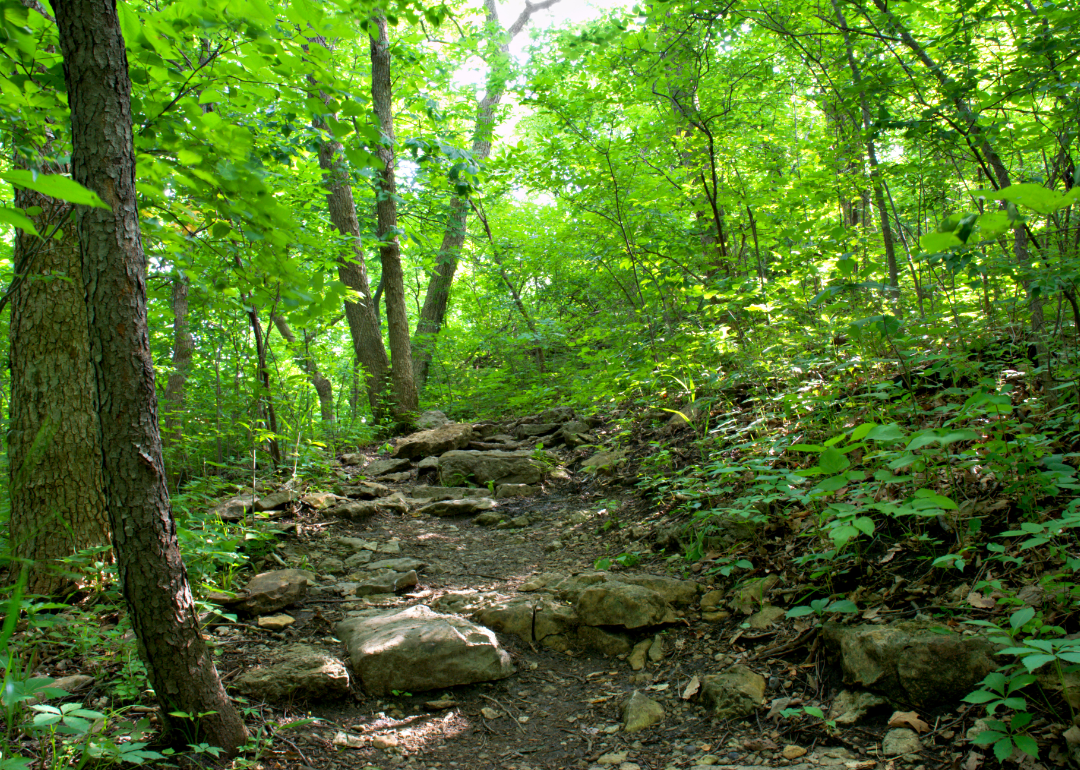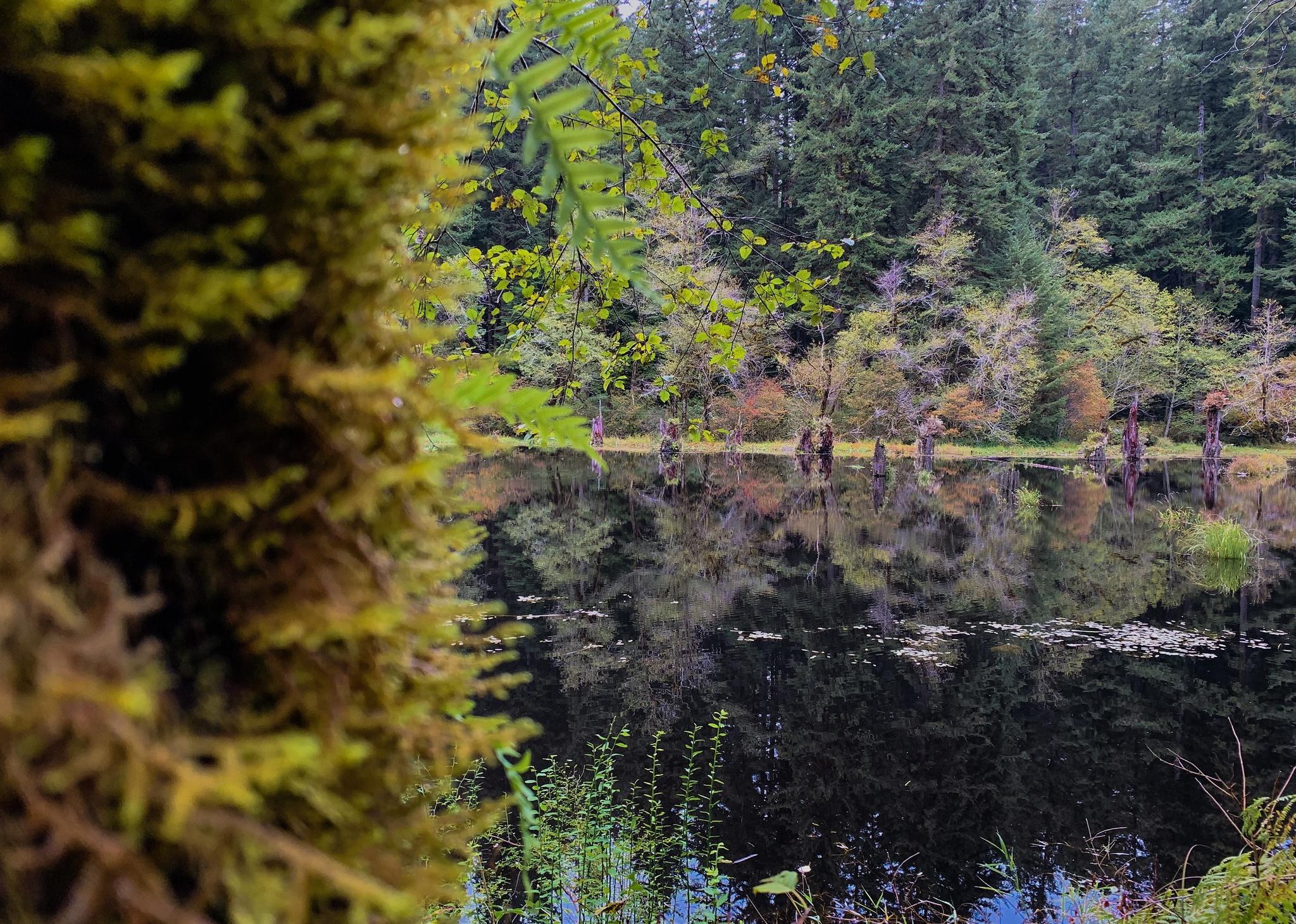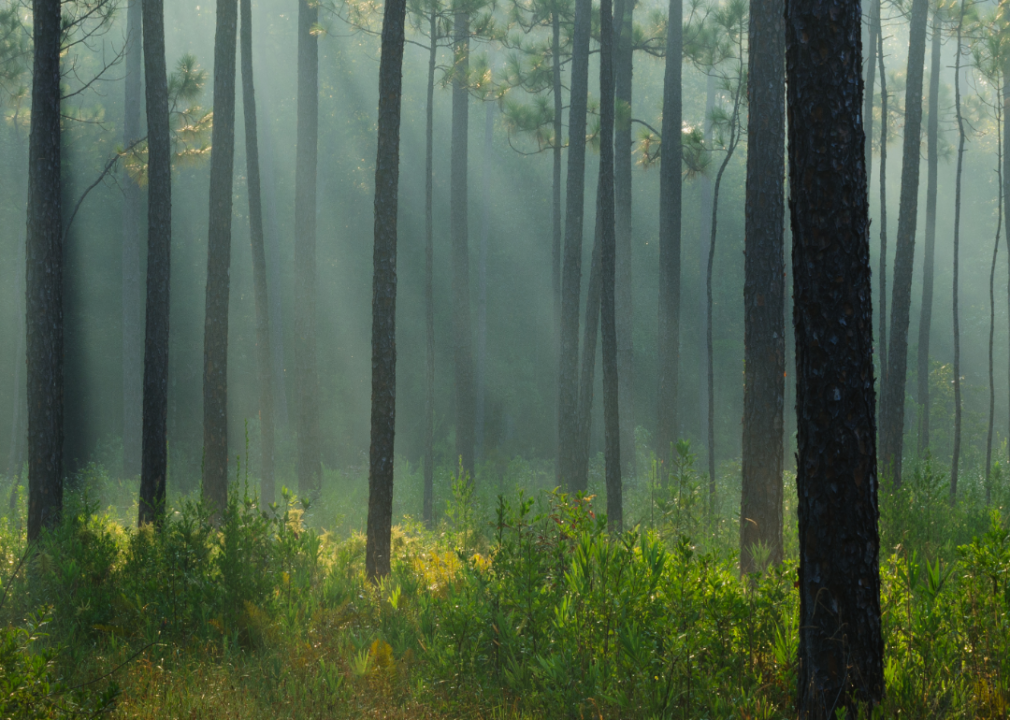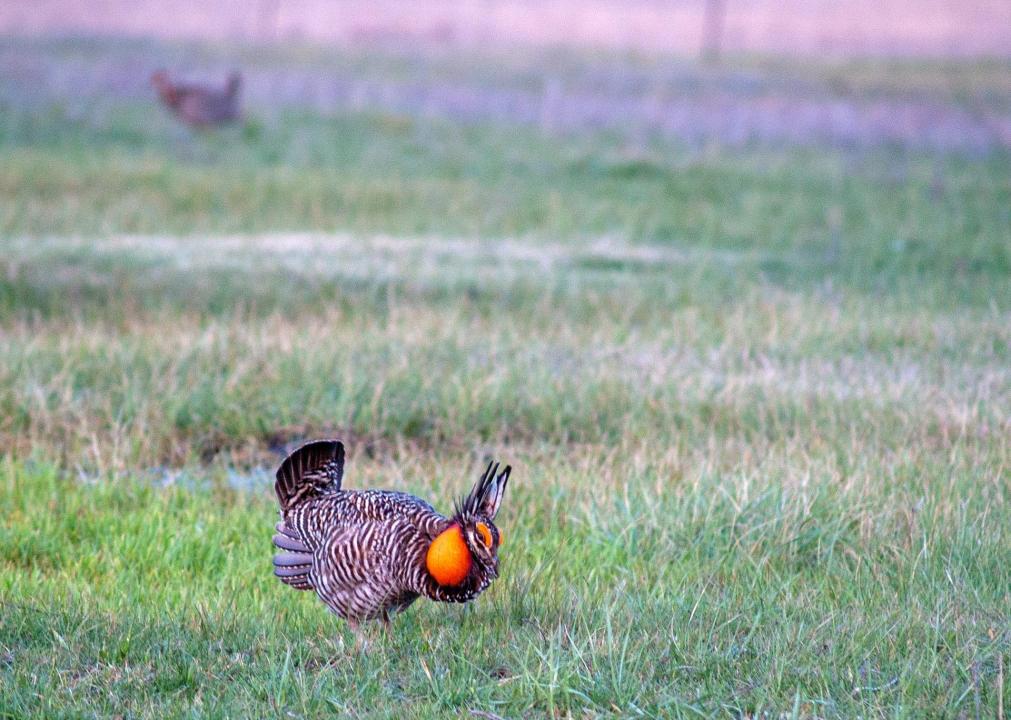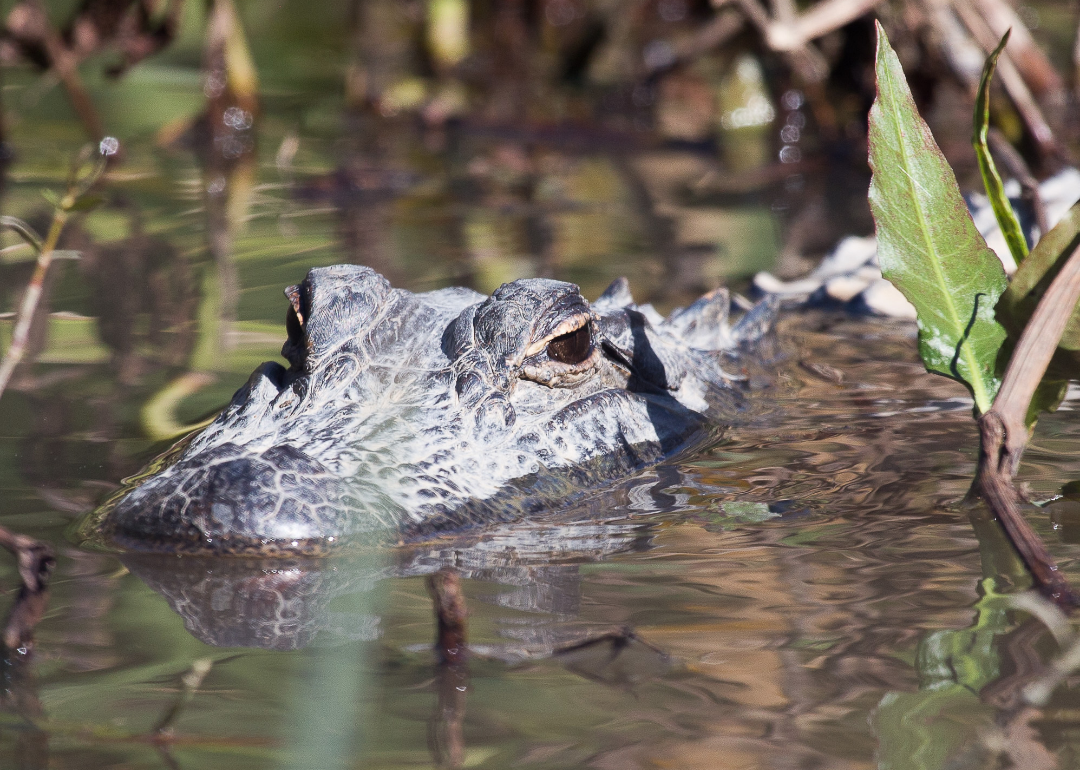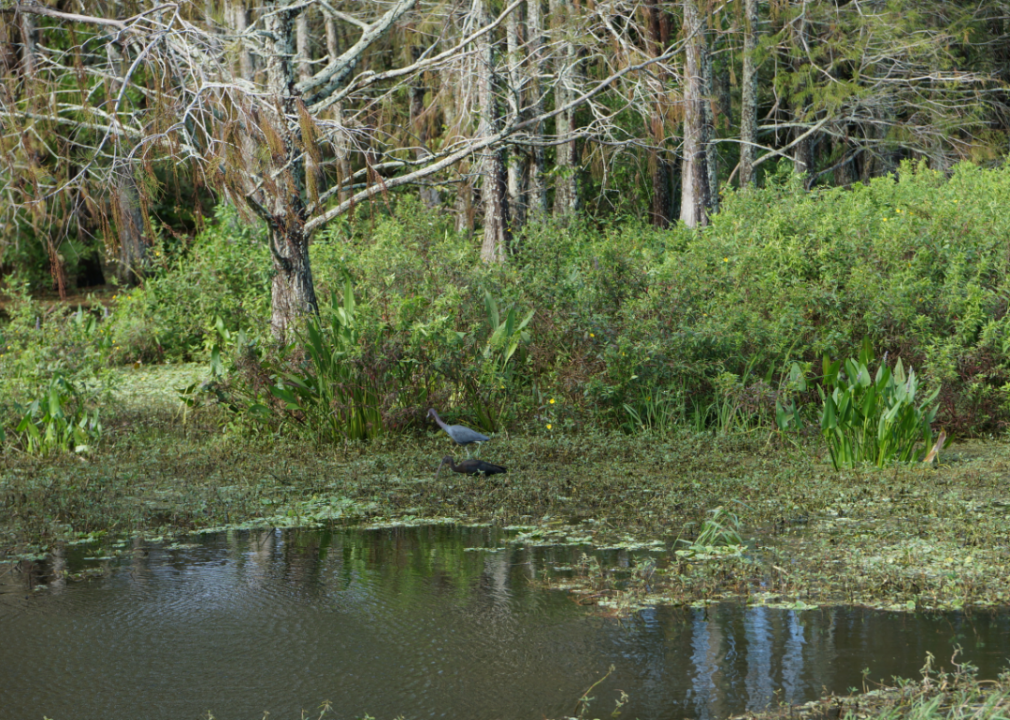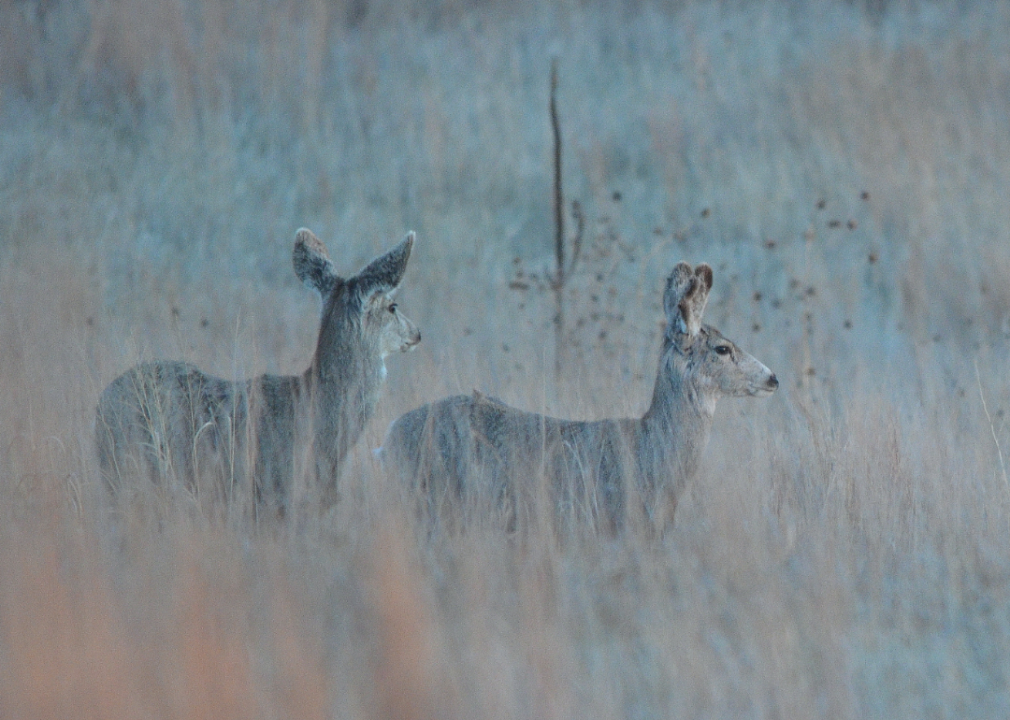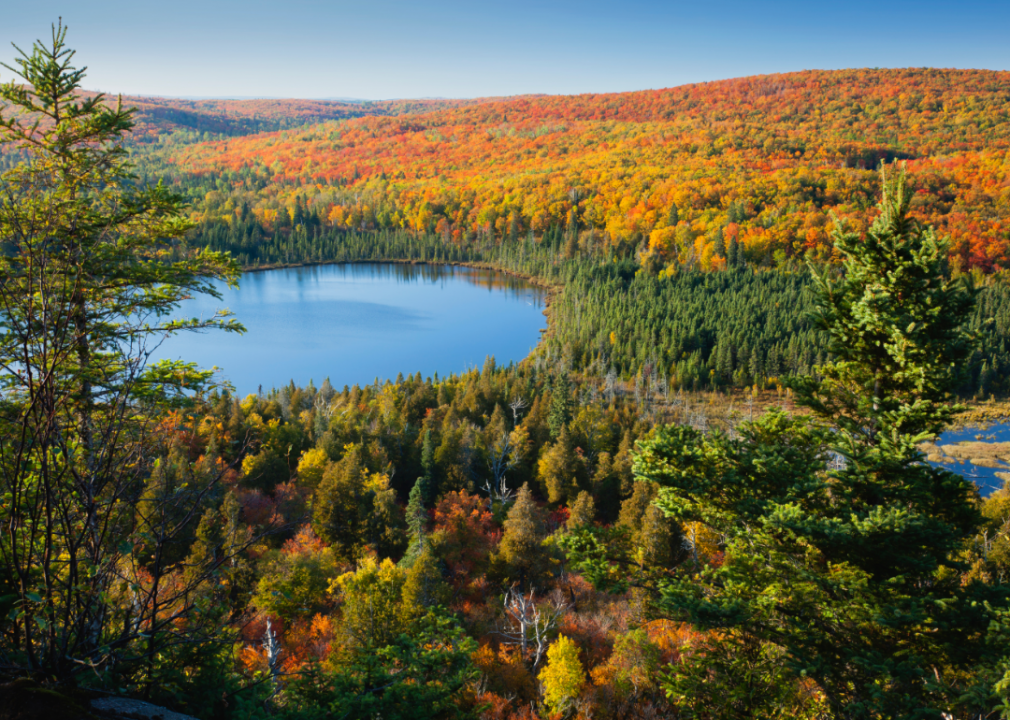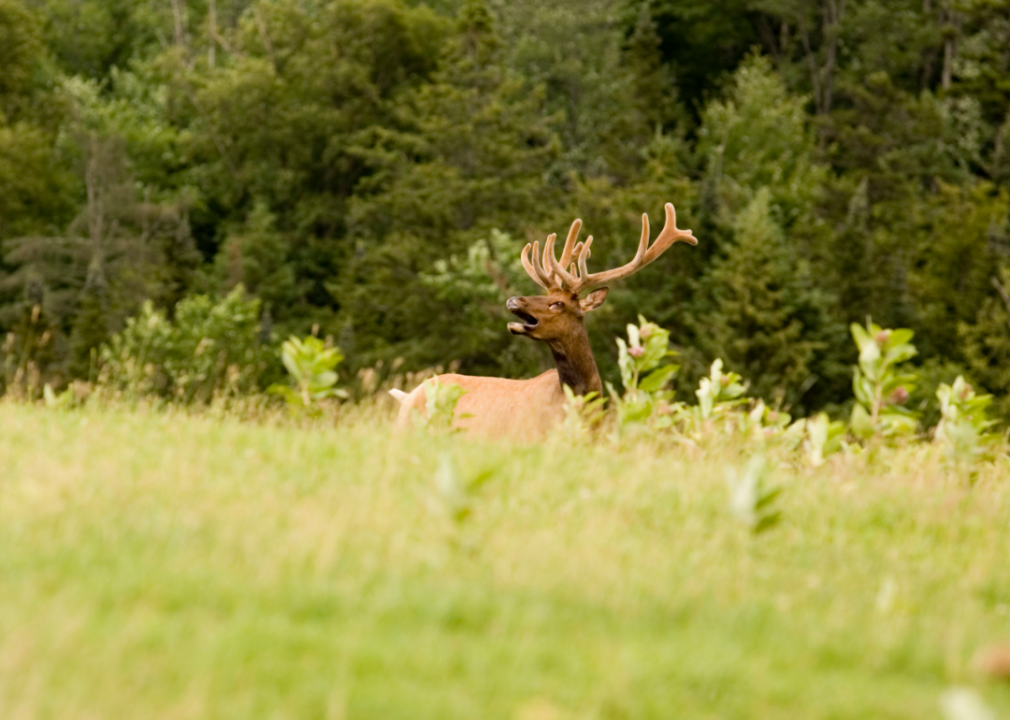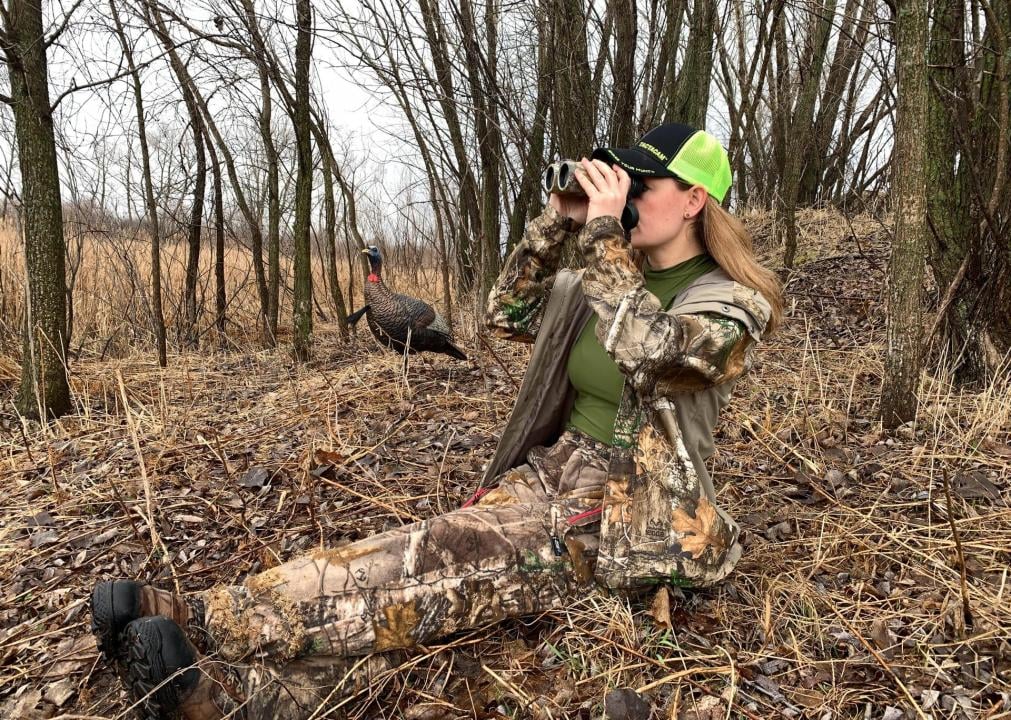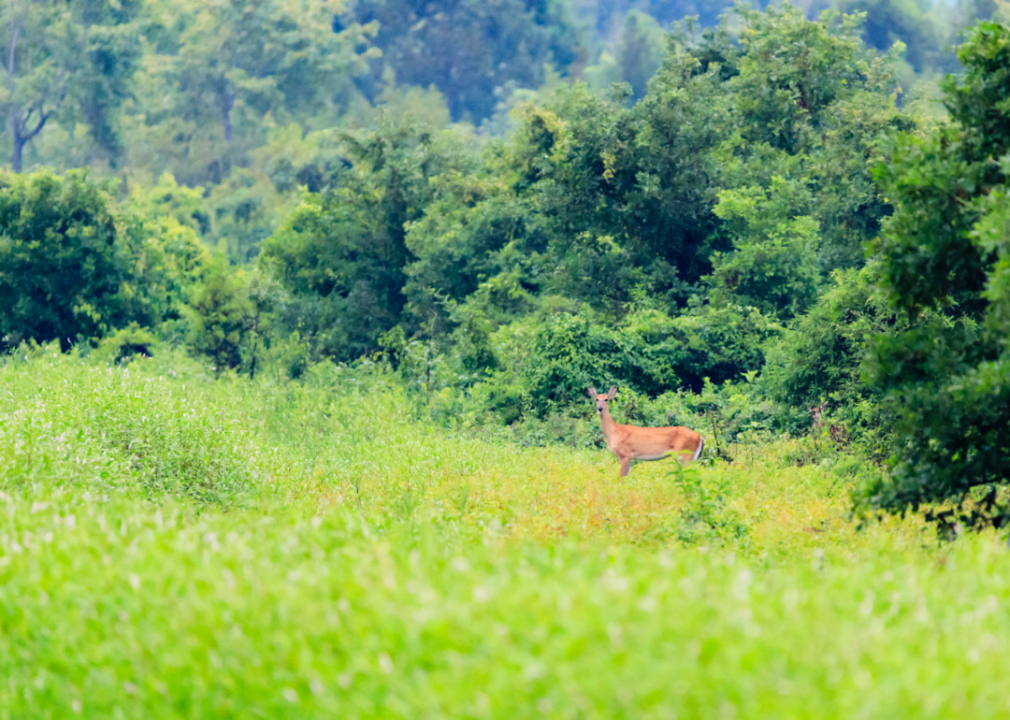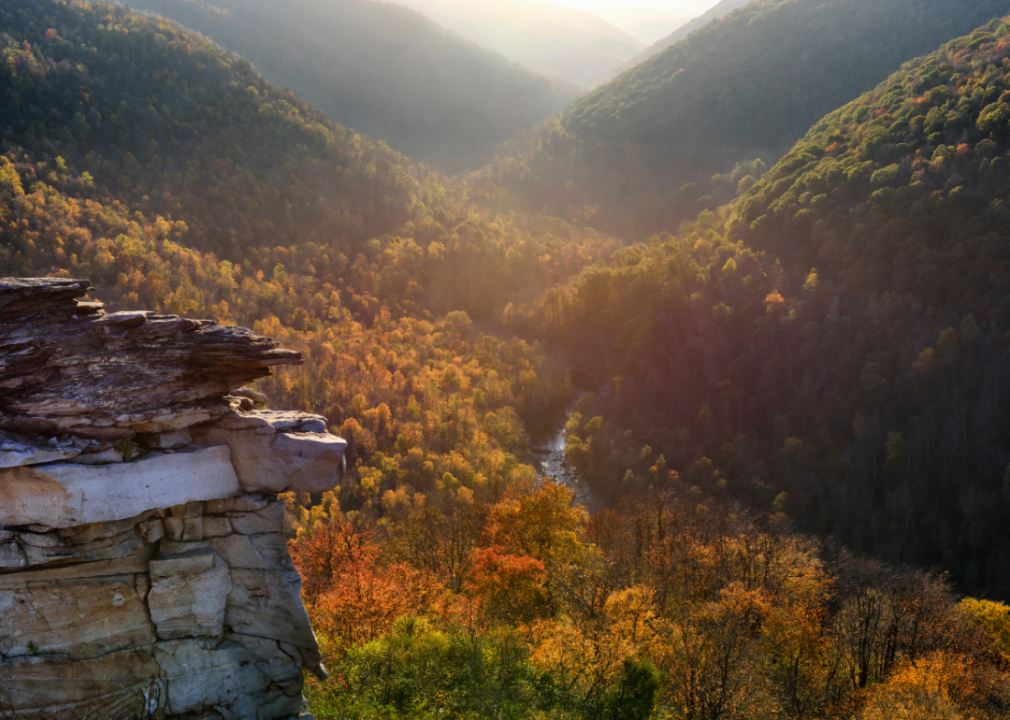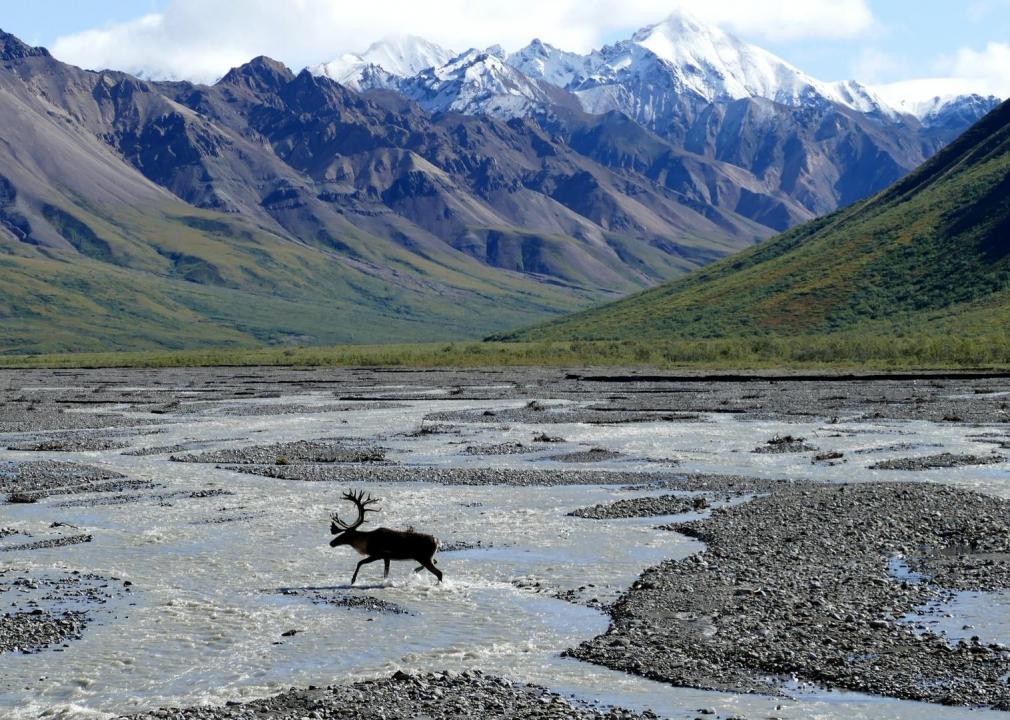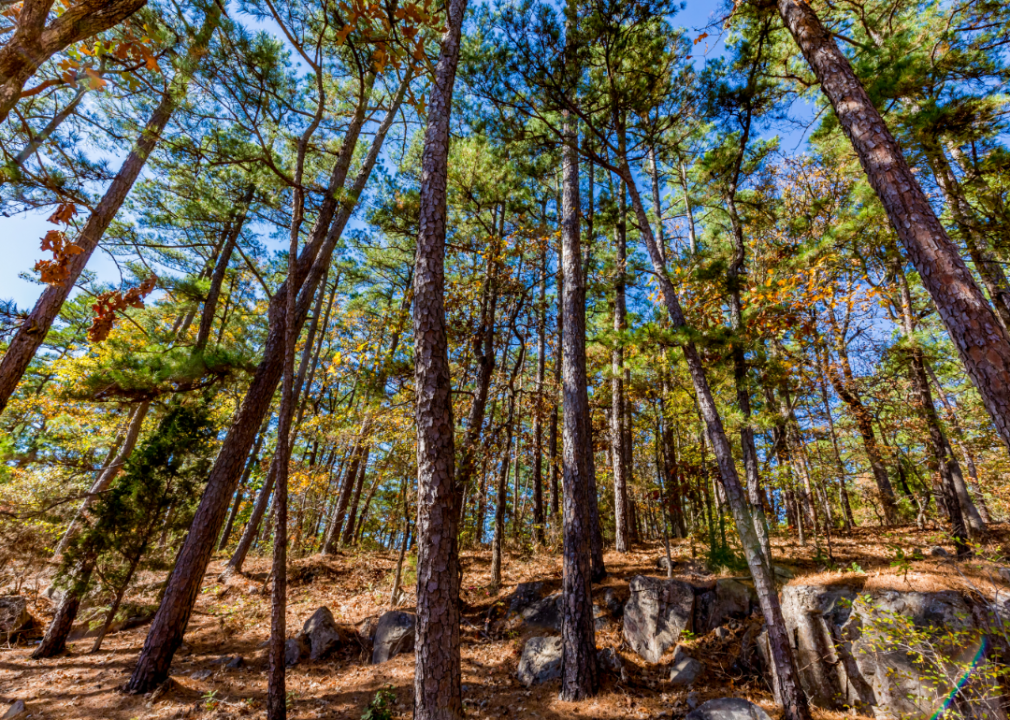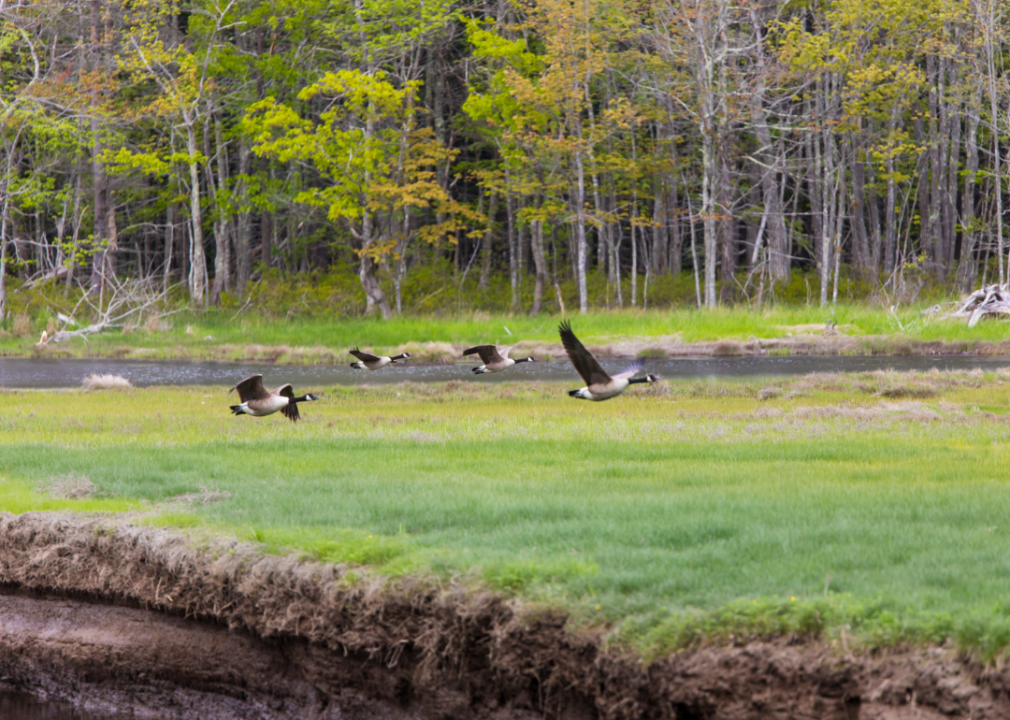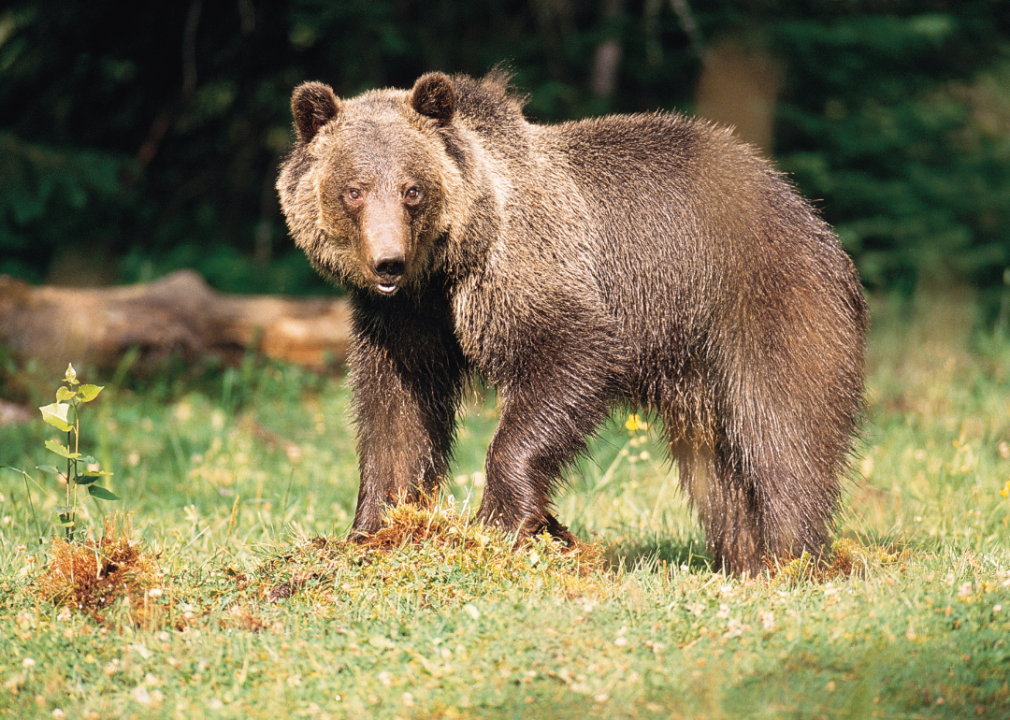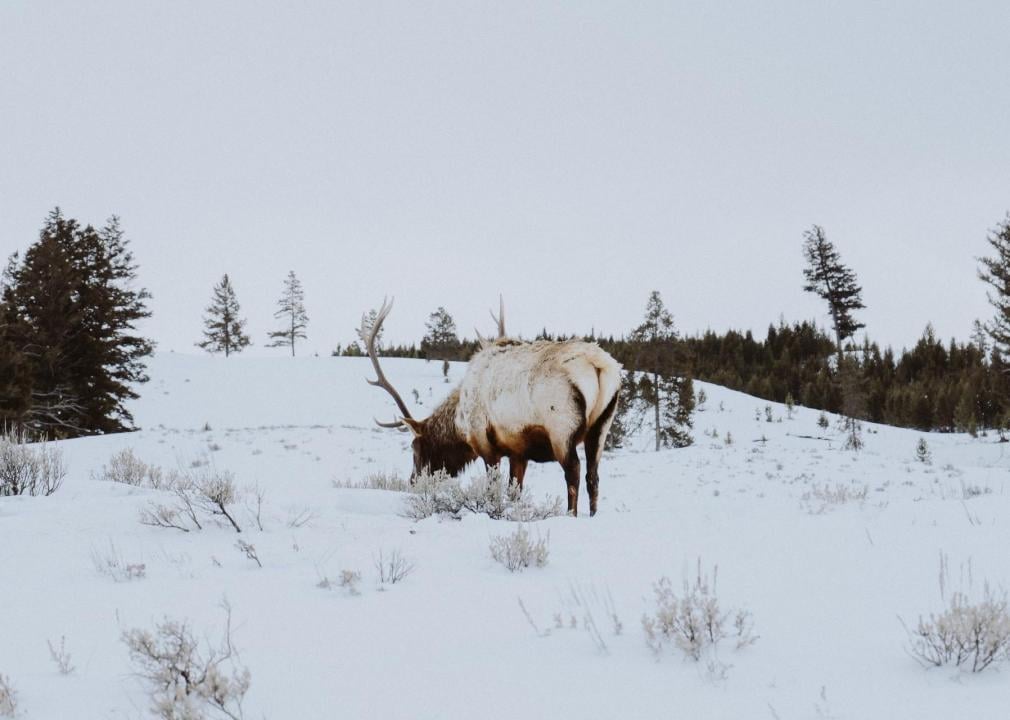States with the most registered hunters
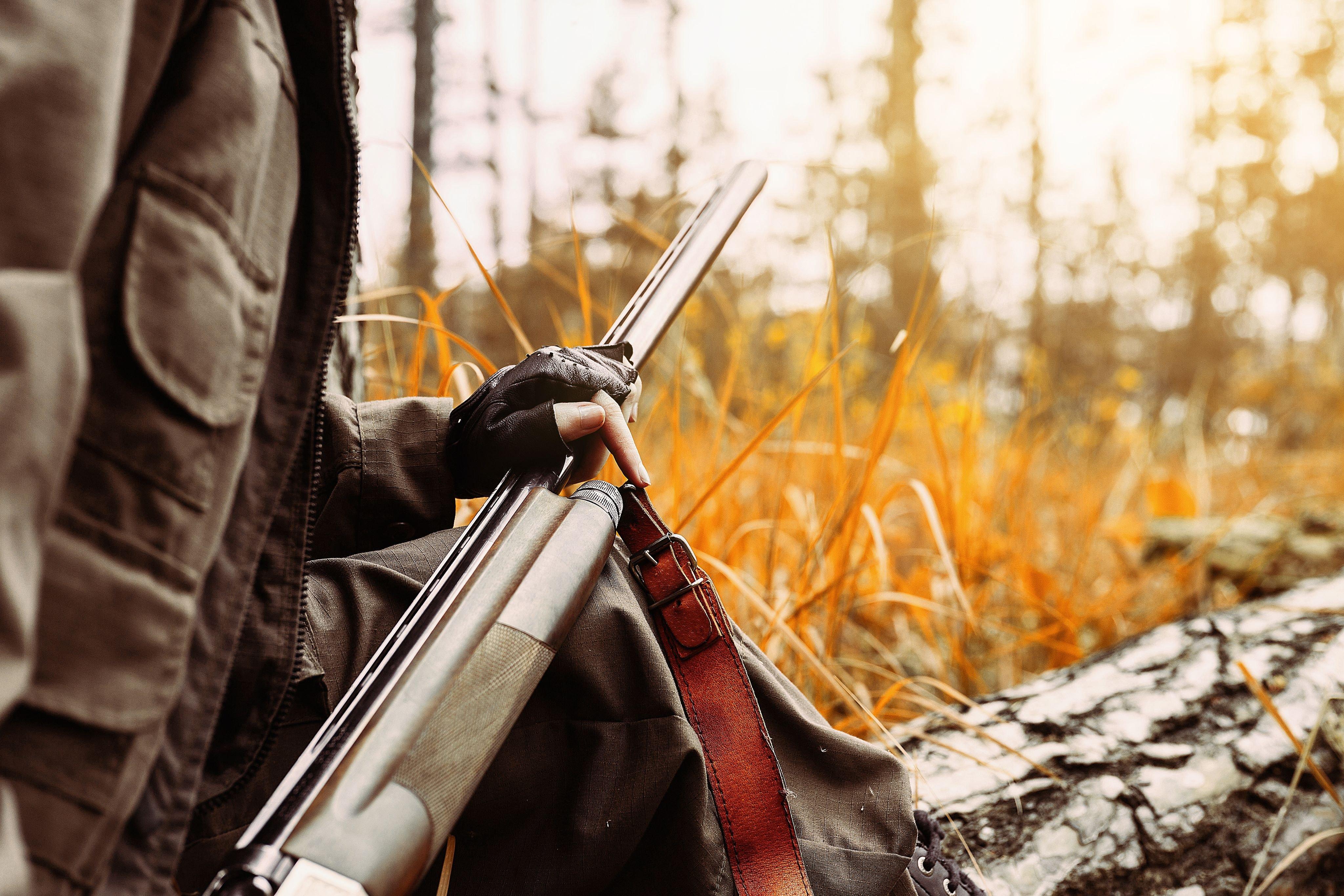
franz12 // Shutterstock
States with the most registered hunters
Closeup of hunter holding a gun in the woods in autumn.
Hunting is one of the oldest forms of human activity. Over the centuries, hunting has largely evolved from necessity to sport—although many hunters in the U.S. do process hunted animals for food.
As hunting gained popularity as a leisure activity, ecosystems suffered, which led to various regulations in order to help preserve and conserve wildlife resources. In the United States, each state has set dates for hunting seasons, thresholds for how many tags or wild game stamps are allowed, and specific areas that are off-limits to hunting in order to help preserve habitats and animal populations.
In the past several decades, the number of people with hunting licenses in the United States has been on a sharp decline. This can be attributed to a few factors, namely the rise in urbanization, the development of farmland, a lack of free time among hunters, and limited access to hunting land. Licenses peaked at roughly 17 million in the 1980s. There are 15.2 million hunting license holders in the United States as of 2021.
The drop-off in revenue from hunting licenses is starting to pose a problem for conservation groups. Thanks to the Pittman-Robertson Act of 1937, an 11% excise tax was placed on the sale of firearms for the purpose of funding conservation. Not only that, but the profits from hunting licenses themselves also go directly to conservation initiatives.
Stacker compiled a list of the states with the most registered hunters using data from the U.S. Fish and Wildlife Service. States are ranked by per capita hunting license holders based on 2021 data and 2021 American Community Survey population estimates, with hunting licenses, tags, permits, and stamps per capita serving as a tiebreaker.
So which states are holding steady with hunting traditions? Take a look to see where your state ranks on the list.
You may also like: Breathtaking views from all 50 states
![]()
Canva
#50. California
– Paid hunting license holders: 0.7 for every 100 people (262,009 total)
– Hunting license, tags, permits & stamps: 2.5 for every 100 people (975,075 total)
– Cost of hunting licenses, tags, permits & stamps: $22,551,165
Over the past 50 years, the number of hunting licenses in California has been on a rapid decline, falling 70% from more than 760,000 in the 1970s to 262,000 in 2021. Urbanization and strict gun laws, in addition to a drop in overall interest, are why California has the fewest number of hunting licenses in the nation.
Unsplash
#49. Rhode Island
– Paid hunting license holders: 0.7 for every 100 people (7,514 total)
– Hunting license, tags, permits & stamps: 4.9 for every 100 people (53,724 total)
– Cost of hunting licenses, tags, permits & stamps: $782,215
In less than 20 years, Rhode Island saw a 40% drop in the number of hunting licenses for residents. This can have a Catch-22 effect on the wildlife population in the state. According to the Wildlife Restoration Act of 1937, most of the state conservation efforts are funded through hunting and fishing license sales and firearms sales.
Canva
#48. Hawaii
– Paid hunting license holders: 0.7 for every 100 people (10,608 total)
– Hunting license, tags, permits & stamps: 0.8 for every 100 people (11,971 total)
– Cost of hunting licenses, tags, permits & stamps: $588,648
Less than 1% of Hawaii’s population has a hunting license. Still, all the major islands have huntable big game. The most popular are feral pigs, mouflon sheep, and axis deer, according to the Archery Trade Association.
Pixabay
#47. New Jersey
– Paid hunting license holders: 0.7 for every 100 people (68,767 total)
– Hunting license, tags, permits & stamps: 4.4 for every 100 people (403,183 total)
– Cost of hunting licenses, tags, permits & stamps: $7,889,407
Fewer than 69,000 people in the state of New Jersey have a paid hunting license, which is less than 1% of the entire population. Maybe it’s because New Jersey gun laws are some of the most restrictive in the country—the second toughest in the nation, according to NJ.com. Another reason could be that New Jersey is the most densely populated state in the country, with roughly 1,210 people per square mile. That doesn’t leave a lot of open space opportunities for hunting grounds. Moreover, gun ownership in the state is among the lowest in the country.
Unsplash
#46. Massachusetts
– Paid hunting license holders: 0.8 for every 100 people (55,139 total)
– Hunting license, tags, permits & stamps: 3.7 for every 100 people (256,950 total)
– Cost of hunting licenses, tags, permits & stamps: $2,483,448
Since the end of 2019, Massachusetts has been implementing reforms to its hunting laws, becoming the fifth state in the country to ban hunting contests that target fur-bearing animals, such as coyotes. The state’s Fisheries and Wildlife Board also voted to ban the intentional abandonment of a wounded or dead animal without making “a reasonable effort to retrieve and use it.”
You may also like: States with the most UFO sightings
Canva
#45. Florida
– Paid hunting license holders: 0.9 for every 100 people (191,501 total)
– Hunting license, tags, permits & stamps: 1.4 for every 100 people (295,399 total)
– Cost of hunting licenses, tags, permits & stamps: $7,308,761
Hunting may be on the decline across America, but in Florida, hunters are keeping an over 100-year-old hunting tradition alive. Since 1907, St. Vincent Island has been used as a “wildlife emporium,” according to the U.S. Fish and Wildlife Service. For three days every fall, hunters descend on the island to hunt the population of sambar deer that inhabit the island.
Canva
#44. Connecticut
– Paid hunting license holders: 0.9 for every 100 people (32,052 total)
– Hunting license, tags, permits & stamps: 2.9 for every 100 people (105,920 total)
– Cost of hunting licenses, tags, permits & stamps: $2,348,543
Like other states with declining hunter populations, Connecticut’s conservation efforts are suffering. The Connecticut Post reports that over the past 20 to 30 years, the number of licensed hunters in Connecticut has dropped from more than 5% of the population to less than 1%.
Unsplash
#43. Delaware
– Paid hunting license holders: 1.6 for every 100 people (15,619 total)
– Hunting license, tags, permits & stamps: 5.2 for every 100 people (52,041 total)
– Cost of hunting licenses, tags, permits & stamps: $1,476,015
Delaware also has a small percentage of licensed hunters. Less than 2% of the population has a hunting license. But about 10% of land in Delaware is state-owned, meaning it is open for public hunting.
Unsplash
#42. Maryland
– Paid hunting license holders: 1.9 for every 100 people (116,702 total)
– Hunting license, tags, permits & stamps: 5.5 for every 100 people (337,934 total)
– Cost of hunting licenses, tags, permits & stamps: $6,693,349
The gross cost of all hunting licenses in Maryland is upwards of $6 million. But that’s merely the tip of the iceberg in terms of how much money hunting generates in the state. According to Hunting Works for Maryland, in 2018, hunting generated $401 million in economic activity in the state, the majority of which was spent at locally owned businesses across the state. Hunting also generates $32 million in state and local taxes.
Pixabay
#41. Washington
– Paid hunting license holders: 2.2 for every 100 people (171,940 total)
– Hunting license, tags, permits & stamps: 9.1 for every 100 people (701,866 total)
– Cost of hunting licenses, tags, permits & stamps: $17,998,908
Washington is one of six states that does not have an age minimum requirement for hunting. The others are Alabama, Illinois, Indiana, New Mexico, and Vermont. After that, the next youngest age is 6 years old, in the state of Arkansas.
You may also like: Can you answer these real ‘Jeopardy!’ clues about your state?
Canva
#40. Illinois
– Paid hunting license holders: 2.3 for every 100 people (293,617 total)
– Hunting license, tags, permits & stamps: 10.8 for every 100 people (1,368,224 total)
– Cost of hunting licenses, tags, permits & stamps: $31,448,214
The past five decades have been disappointing for Illinois’ hunting industry as the number of licensed hunters continues to decline. This is a direct result of declining natural habitats as farms and cities have continued to expand since the 1970s.
Canva
#39. New York
– Paid hunting license holders: 2.8 for every 100 people (550,868 total)
– Hunting license, tags, permits & stamps: 7.0 for every 100 people (1,392,293 total)
– Cost of hunting licenses, tags, permits & stamps: $25,476,082
Less than 3% of the New York State population has a hunting license. However, within that population, women are the fastest-growing demographic. According to New York Hunting & Trapping, women are drawn to the sport to spend more time with family, to put organic and locally sourced food on the table, and to spend more time outside. In 2018, 53,000 women in the state had hunting licenses.
Canva
#38. Nevada
– Paid hunting license holders: 2.8 for every 100 people (89,603 total)
– Hunting license, tags, permits & stamps: 4.0 for every 100 people (125,876 total)
– Cost of hunting licenses, tags, permits & stamps: $7,496,873
The hunting population in Nevada isn’t super robust (with just 2.8% of the population owning licenses), but it is one of the more controversial. According to the Sierra Nevada Ally, Nevada is one of 32 states to allow an individual to legally hunt a bear. It is also one of only 14 states to allow specially trained dogs to assist in bear hunting, which is one of the most hotly contested laws in the state.
Unsplash
#37. Ohio
– Paid hunting license holders: 2.9 for every 100 people (346,220 total)
– Hunting license, tags, permits & stamps: 7.4 for every 100 people (870,022 total)
– Cost of hunting licenses, tags, permits & stamps: $24,024,033
Ohio hunters typically have something to smile about every deer season, as the state is one of the best places in the country to hunt deer. According to Outdoor News, the 2019-2020 hunting season culled more than 184,000 deer. The season runs from the end of September to the beginning of February.
Canva
#36. Virginia
– Paid hunting license holders: 2.9 for every 100 people (254,517 total)
– Hunting license, tags, permits & stamps: 9.5 for every 100 people (818,928 total)
– Cost of hunting licenses, tags, permits & stamps: $23,642,855
There are a plethora of species open for hunters in Virginia, from big game such as elk and deer to coyotes and bobcats. The age limit is 12, and children need adult supervision. Conservation and education are also integral to hunting culture in the state.
You may also like: Pets banned in every state
Canva
#35. Indiana
– Paid hunting license holders: 3.7 for every 100 people (250,481 total)
– Hunting license, tags, permits & stamps: 5.3 for every 100 people (359,084 total)
– Cost of hunting licenses, tags, permits & stamps: $11,711,615
Indiana is still struggling with a declining number of licensed hunters in the state, which directly affects wildlife preservation programs. To combat this, officials have been trying to recruit more Hoosier women and young people to hunt game.
Canva
#34. Texas
– Paid hunting license holders: 3.7 for every 100 people (1,094,753 total)
– Hunting license, tags, permits & stamps: 5.8 for every 100 people (1,704,014 total)
– Cost of hunting licenses, tags, permits & stamps: $49,012,182
Things have looked a little different to the more than 1 million licensed hunters in Texas as of the 2020-21 season. The Texas Outdoor Annual Hunting, Fishing, and Boating Regulations went all digital. The annual booklets are usually printed, but due to the economic impact of the coronavirus, going online was the more financially sound option.
Canva
#33. New Hampshire
– Paid hunting license holders: 4.0 for every 100 people (55,562 total)
– Hunting license, tags, permits & stamps: 10.8 for every 100 people (149,985 total)
– Cost of hunting licenses, tags, permits & stamps: $4,749,020
There are 56,001 paid hunting license holders in the state of New Hampshire, with the exception of those who belong to one very well-to-do club. The Blue Mountain Forest Association is a private hunting reserve with a membership fee upwards of $10,000, which invites its members to hunt on its grounds—no license required.
Canva
#32. South Carolina
– Paid hunting license holders: 4.0 for every 100 people (208,843 total)
– Hunting license, tags, permits & stamps: 19.3 for every 100 people (1,000,961 total)
– Cost of hunting licenses, tags, permits & stamps: $10,520,602
While the percentage of the South Carolina population with hunting licenses is low, numbers started to rise when COVID-19 pushed people to look for alternative outdoor activities. Among the huntable species in the state are black bears and alligators.
Sumikophoto // Shutterstock
#31. Arizona
– Paid hunting license holders: 4.2 for every 100 people (302,383 total)
– Hunting license, tags, permits & stamps: 7.6 for every 100 people (553,315 total)
– Cost of hunting licenses, tags, permits & stamps: $20,984,172
Arizona is one of the top states in the nation for big game hunting. There are 10 big game species in the state, including pronghorn, black bears, mountain lions, desert bighorn sheep, elk, and more.
You may also like: Best college in every state
Unsplash
#30. Colorado
– Paid hunting license holders: 5.1 for every 100 people (296,609 total)
– Hunting license, tags, permits & stamps: 10.4 for every 100 people (602,207 total)
– Cost of hunting licenses, tags, permits & stamps: $66,437,239
Thanks to the Colorado Parks & Wildlife Commission, hunters that are part of the Public Access Program gained more than 200,000 new acres of hunting grounds ahead of the 2020 season, adding to the 567,000 acres it already possessed. The Public Access Program provides seasonal hunting and fishing opportunities on Colorado trust land.
Chris Short // Wikimedia Commons
#29. New Mexico
– Paid hunting license holders: 5.2 for every 100 people (110,874 total)
– Hunting license, tags, permits & stamps: 18.9 for every 100 people (400,706 total)
– Cost of hunting licenses, tags, permits & stamps: $17,772,891
You don’t have to commit to a safari in Africa to track down big African game. The gemsbok, a species indigenous to Africa, was introduced to New Mexico by the Department of Game and Fish in the 1960s. Today there are around 2,000 gemsboks in New Mexico.
Canva
#28. North Carolina
– Paid hunting license holders: 5.8 for every 100 people (609,131 total)
– Hunting license, tags, permits & stamps: 2.9 for every 100 people (307,060 total)
– Cost of hunting licenses, tags, permits & stamps: $11,113,546
North Carolina’s licensed hunters have been operating under a new set of hunting rules and regulations. According to The Asheville Citizen-Times, the North Carolina Wildlife Resources Commission adopted 44 proposed rules in early 2020. One of the new rules is that big game harvest must be registered by noon the following day after leaving the hunting area.
Canva
#27. Michigan
– Paid hunting license holders: 6.4 for every 100 people (642,242 total)
– Hunting license, tags, permits & stamps: 20.7 for every 100 people (2,084,692 total)
– Cost of hunting licenses, tags, permits & stamps: $37,084,204
Hunting is a cash cow for the state of Michigan, bringing around $2.8 billion into the state economy. But much like the rest of the country, the industry is on the decline, likely due to a younger generation who is less eager to take up hunting.
Canva
#26. Georgia
– Paid hunting license holders: 6.7 for every 100 people (724,269 total)
– Hunting license, tags, permits & stamps: 13.3 for every 100 people (1,434,935 total)
– Cost of hunting licenses, tags, permits & stamps: $19,706,954
While the majority of the rest of the country sees its hunting numbers decline, Georgia is one of the exceptions. In 2015, the state had nearly 400,000 licensed hunters. That number has now nearly doubled.
You may also like: States where the most people live in maternal health care deserts
Unsplash
#25. Iowa
– Paid hunting license holders: 6.7 for every 100 people (214,398 total)
– Hunting license, tags, permits & stamps: 20.0 for every 100 people (637,595 total)
– Cost of hunting licenses, tags, permits & stamps: $18,881,103
Hunting is on the decline across the nation, and many hunters in Iowa are saying that could be detrimental in terms of controlling the deer population. The Iowa Department of Natural Resources estimates that the state has a deer herd of around 500,000 at the close of the hunting season in 2019. The number of deer observed by the DNR dropped by 12% in 2021 but went back up in 2022. Harvest estimates have reached 100,000 per year in recent years, as well.
Canva
#24. Kentucky
– Paid hunting license holders: 7.1 for every 100 people (319,690 total)
– Hunting license, tags, permits & stamps: 12.1 for every 100 people (546,865 total)
– Cost of hunting licenses, tags, permits & stamps: $22,093,811
2021’s deer season in Kentucky exceeded already high numbers coming out of the pandemic-affected 2020. That trend held in 2022, which also featured the harvest of a 238-inch buck, the largest nontypical deer ever taken in the state—by an 8th grader.
Canva
#23. Pennsylvania
– Paid hunting license holders: 7.3 for every 100 people (945,731 total)
– Hunting license, tags, permits & stamps: 18.6 for every 100 people (2,408,691 total)
– Cost of hunting licenses, tags, permits & stamps: $39,917,365
The 2019-2020 season was a booming one for Pennsylvania’s hunters, seeing more deer harvested in a single season than since the 2004-2005 season. 2021-2022 didn’t fair quite as well, but still, more than 376,000 deer were harvested.
Canva
#22. Utah
– Paid hunting license holders: 7.5 for every 100 people (250,565 total)
– Hunting license, tags, permits & stamps: 13.6 for every 100 people (455,563 total)
– Cost of hunting licenses, tags, permits & stamps: $20,571,374
While the rest of the nation is slowly losing interest in hunting, Utah is proving to be one of the exceptions. Utah’s hunting licenses have remained fairly consistent over the past 10 years. New licenses spiked during the first two years of the pandemic.
Canva
#21. Missouri
– Paid hunting license holders: 7.7 for every 100 people (472,993 total)
– Hunting license, tags, permits & stamps: 29.4 for every 100 people (1,811,870 total)
– Cost of hunting licenses, tags, permits & stamps: $23,189,614
In a controversial move, the Missouri Department of Conservation announced in May 2020 a framework for a black bear hunting season. The black bear population has been increasing annually by about 9%, and the hunting season is aimed at keeping that number in check. Presently there are specific zones and dates on which hunters may go after black bears.
You may also like: States with the worst droughts
Bureau of Land Management Oregon and Washington // Flickr
#20. Oregon
– Paid hunting license holders: 7.7 for every 100 people (328,323 total)
– Hunting license, tags, permits & stamps: 31.0 for every 100 people (1,318,213 total)
– Cost of hunting licenses, tags, permits & stamps: $29,864,911
As Oregon becomes an increasingly more popular place to live, its wildlife areas are starting to feel the effects of overcrowding. To combat this, Oregon’s public lands increased its costs for visitors. This includes hunting and fishing licenses, as well as tags. It’s part of a six-year strategy to slowly increase the cost of licenses, due to a $32 million shortcoming in the Oregon Department of Fish and Wildlife in 2014.
Canva
#19. Alabama
– Paid hunting license holders: 9.0 for every 100 people (452,400 total)
– Hunting license, tags, permits & stamps: 12.8 for every 100 people (647,080 total)
– Cost of hunting licenses, tags, permits & stamps: $17,310,768
Alabama hunting is yet another victim of the rise of urbanization. A beloved tradition among older generations, it is one that has not been picked up as quickly by the younger ones. According to Yellow Hammer News, the decline is also driven by changing social trends—in other words, kids prefer virtual games to grandpa’s hunting rifle. Another factor is the rising cost of hunting in the state overall.
Unsplash
#18. Kansas
– Paid hunting license holders: 9.0 for every 100 people (264,331 total)
– Hunting license, tags, permits & stamps: 15.7 for every 100 people (460,530 total)
– Cost of hunting licenses, tags, permits & stamps: $27,157,792
Echoing the shifting hunting trends across the nation, Kansas is also reporting a decrease in the number of licenses and tags sold. Deer tag purchases in Kansas have gone down by more than 26,000 since 2015. The Kansas Department of Wildlife, Parks, and Tourism depends on these dollars for funding, so to make up the difference, they have allowed people from out of state to also buy tags.
Canva
#17. Louisiana
– Paid hunting license holders: 9.2 for every 100 people (424,918 total)
– Hunting license, tags, permits & stamps: 12.4 for every 100 people (575,138 total)
– Cost of hunting licenses, tags, permits & stamps: $10,118,018
The number of women purchasing hunting licenses is going up across the nation. According to a U.S. Fish and Wildlife Service study, it’s the fastest-growing demographic in hunting. In Louisiana, however, the number of women who are purchasing hunting licensees is going down. Some say that may change, however, now that the state has approved a “blaze pink” alternative to the standard orange color for hunting garb.
Canva
#16. Mississippi
– Paid hunting license holders: 9.2 for every 100 people (271,281 total)
– Hunting license, tags, permits & stamps: 12.8 for every 100 people (376,696 total)
– Cost of hunting licenses, tags, permits & stamps: $13,208,328
In fall 2020, the Mississippi Department of Wildlife, Fisheries, and Parks took its entire hunting certification and education program online. It allows residents ages 16 and older to complete the education requirements via the web. Anyone who is under 16 still has to participate in classroom education to be certified.
You may also like: Best beers from every state
Canva
#15. Nebraska
– Paid hunting license holders: 9.2 for every 100 people (180,932 total)
– Hunting license, tags, permits & stamps: 20.0 for every 100 people (392,813 total)
– Cost of hunting licenses, tags, permits & stamps: $16,792,832
To combat a rising deer population that is destroying crops, a new bill was passed in 2020 allowing for an earlier deer hunting season. The bill provides four permits per landowner, as well.
Canva
#14. Minnesota
– Paid hunting license holders: 9.6 for every 100 people (545,300 total)
– Hunting license, tags, permits & stamps: 23.3 for every 100 people (1,331,896 total)
– Cost of hunting licenses, tags, permits & stamps: $33,914,480
Minnesota’s Department of Natural Resources upped the number of elk hunting licenses in 2020 to 44 from 27 in 2019. According to the Detroit Lakes Tribune, other changes include more elk seasons and license options, which will be used to help manage the rising elk populations in the state. The state issues these licenses on a lottery system; in 2022, the number was pulled back to 30.
Canva
#13. Vermont
– Paid hunting license holders: 9.6 for every 100 people (62,237 total)
– Hunting license, tags, permits & stamps: 28.5 for every 100 people (183,801 total)
– Cost of hunting licenses, tags, permits & stamps: $4,312,158
Hunting license sales dropped in every Vermont county between 2016 and 2018. The reason? Rising urbanization, changing attitudes, aging population, and declining rural populations. The decrease in sales started happening back in 1987 and has continued ever since. 2018 also saw the enactment of a series of new gun laws in the state.
Canva
#12. Tennessee
– Paid hunting license holders: 10.0 for every 100 people (694,458 total)
– Hunting license, tags, permits & stamps: 11.3 for every 100 people (789,079 total)
– Cost of hunting licenses, tags, permits & stamps: $16,784,175
In June 2020, Tennessee passed a law lifting restrictions on family members who want to hunt or fish on family property. Under the new law, family members do not need a hunting or fishing license when participating on farmlands owned by a spouse, parent, or grandparent. The permission trickles down to grandchildren, great-grandchildren, spouses of children, and spouses.
Unsplash
#11. Wisconsin
– Paid hunting license holders: 11.3 for every 100 people (666,670 total)
– Hunting license, tags, permits & stamps: 71.3 for every 100 people (4,202,006 total)
– Cost of hunting licenses, tags, permits & stamps: $38,396,245
In the wake of COVID-19, Wisconsin Gov. Tony Evers made the decision to close hunter safety courses in Oneida County. The Wisconsin-based group Hunter Nation was outraged by the decision, saying that the decision deprived thousands of people of carrying on the hunting tradition. They were later reopened and continue to operate as of early 2023.
You may also like: Most fast food friendly states in America
Canva
#10. Arkansas
– Paid hunting license holders: 11.3 for every 100 people (343,300 total)
– Hunting license, tags, permits & stamps: 16.5 for every 100 people (499,826 total)
– Cost of hunting licenses, tags, permits & stamps: $20,165,548
Funding for natural resource protection is on the decline in Arkansas due to the decreasing number of fishing and hunting licenses. Arkansas’ hunting participation has been on the decline for decades. In 1996, the state passed Amendment 75, which imposed a conservation tax of one-eighth of a cent to make up the difference.
Canva
#9. West Virginia
– Paid hunting license holders: 11.5 for every 100 people (205,447 total)
– Hunting license, tags, permits & stamps: 35.2 for every 100 people (628,413 total)
– Cost of hunting licenses, tags, permits & stamps: $9,155,348
Although nearly 12% of West Virginians take part in hunting, the state’s Division of Natural Resources feels it’s still not enough. While the number is high compared to the rest of the states, it still threatens the future of the wildlife model in the state. A team has been organized to help with recruiting and retention of new hunters and other outdoor pursuits.
Unsplash
#8. Alaska
– Paid hunting license holders: 12.8 for every 100 people (93,559 total)
– Hunting license, tags, permits & stamps: 65.9 for every 100 people (482,736 total)
– Cost of hunting licenses, tags, permits & stamps: $14,664,007
In June 2020, the Trump administration overturned an Obama-era ban on certain hunting and trapping styles on Alaskan national preserves. The rule, which went into effect in July 2020, allows hunters to use certain techniques for hunting and trapping, like artificial light to hunt black bears (cubs included) in their dens. The National Park Service says tribal leaders, as well as hunting groups, support the new rule. Critics say the techniques are cruel.
Canva
#7. Oklahoma
– Paid hunting license holders: 12.9 for every 100 people (512,724 total)
– Hunting license, tags, permits & stamps: 10.4 for every 100 people (415,829 total)
– Cost of hunting licenses, tags, permits & stamps: $10,563,360
Oklahoma is one of the states in the nation that allows for the hunting of black bears. In 2019, the state increased the number of counties that permit the practice from four to 13. This was the first expansion of the open area for black bear hunting since it became permitted in 2009.
Canva
#6. Idaho
– Paid hunting license holders: 14.5 for every 100 people (275,244 total)
– Hunting license, tags, permits & stamps: 87.4 for every 100 people (1,660,649 total)
– Cost of hunting licenses, tags, permits & stamps: $31,814,371
Idaho is another state bucking the downward hunting trend. In fact, according to data from the U.S. Fish and Wildlife Service, Idaho hit a record-high number of paid license holders in 2019. Still, the state isn’t completely safe from the threat of the demise of hunting because population growth is outpacing the growth of hunters. Evidence of this can be seen in the drop in licenses since 2019.
You may also like: Best place to live in every state
Canva
#5. Maine
– Paid hunting license holders: 14.7 for every 100 people (201,370 total)
– Hunting license, tags, permits & stamps: 16.6 for every 100 people (227,192 total)
– Cost of hunting licenses, tags, permits & stamps: $8,000,997
To combat the decline in hunters, the Maine Department of Inland Fisheries and Wildlife has set out to recruit new hunters through a pilot project that pairs novices with experienced mentors. According to The Portland Press Herald, other states have tried similar programs, and Maine has offered the option for veterans in the past. This marked the first time it had been open to the public.
Canva
#4. North Dakota
– Paid hunting license holders: 17.5 for every 100 people (135,724 total)
– Hunting license, tags, permits & stamps: 64.8 for every 100 people (502,166 total)
– Cost of hunting licenses, tags, permits & stamps: $11,362,512
The 2019 deer hunting season in North Dakota appears to have missed the mark. According to The Bismarck Tribune, overall hunter success was 64%, which is shy of the 70% needed in order to be considered a quality season. The dip in numbers has to do with the increase in farmland and oil development. Both have created access issues to hunting land and loss of wildlife habitat. The 2021 season fared even worse at 57%.
Canva
#3. Montana
– Paid hunting license holders: 20.1 for every 100 people (222,309 total)
– Hunting license, tags, permits & stamps: 94.1 for every 100 people (1,039,656 total)
– Cost of hunting licenses, tags, permits & stamps: $39,985,081
Grizzly bears are protected under the federal Endangered Species Act. But according to the Natural Resources Defense Council, Montana’s governor brought together a Citizen’s Advisory Council in case the federal protections are removed. One of the issues they struggled with is whether it should be permitted to hunt grizzlies. The NRDC overwhelmingly believes that grizzlies should continue to be protected. The state, however, entered into an agreement with neighboring Idaho and Wyoming to manage grizzly hunting around Yellowstone National Park should they get the authority.
Unsplash
#2. Wyoming
– Paid hunting license holders: 23.4 for every 100 people (135,228 total)
– Hunting license, tags, permits & stamps: 46.6 for every 100 people (269,714 total)
– Cost of hunting licenses, tags, permits & stamps: $36,817,176
It’s safe to say that the tradition is still strong in this state. According to the Gillette News Record, hunting license figures have remained stable year over year. Wyoming hunting allows for elk, deer, antelope, black bears, wolves, mountain goats, bison, sheep, and more.
Unsplash
#1. South Dakota
– Paid hunting license holders: 23.9 for every 100 people (213,786 total)
– Hunting license, tags, permits & stamps: 39.9 for every 100 people (356,961 total)
– Cost of hunting licenses, tags, permits & stamps: $22,089,218
Even though South Dakota has the highest percentage of paid hunting license holders per capita, it is still one of the states in the nation struggling with hunting decline. According to The Associated Press, the state sold 26,000 fewer hunting licenses in 2019, which resulted in a $1 million revenue loss. Money from hunting sales contributes to half of the budget of the state’s Department of Game, Fish, and Parks. Fewer licenses were made available in 2021 compared to the previous year in order to allow deer to repopulate in the eastern part of the state.
You may also like: Fastest-warming states since 1970
